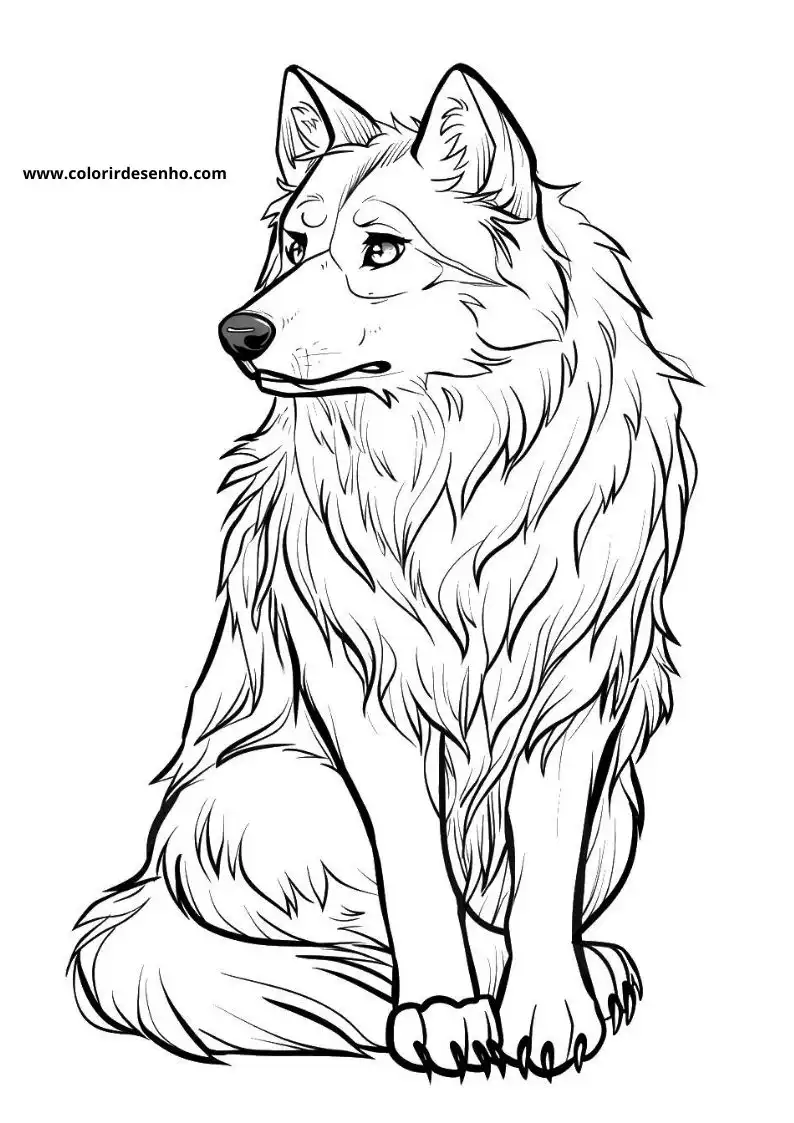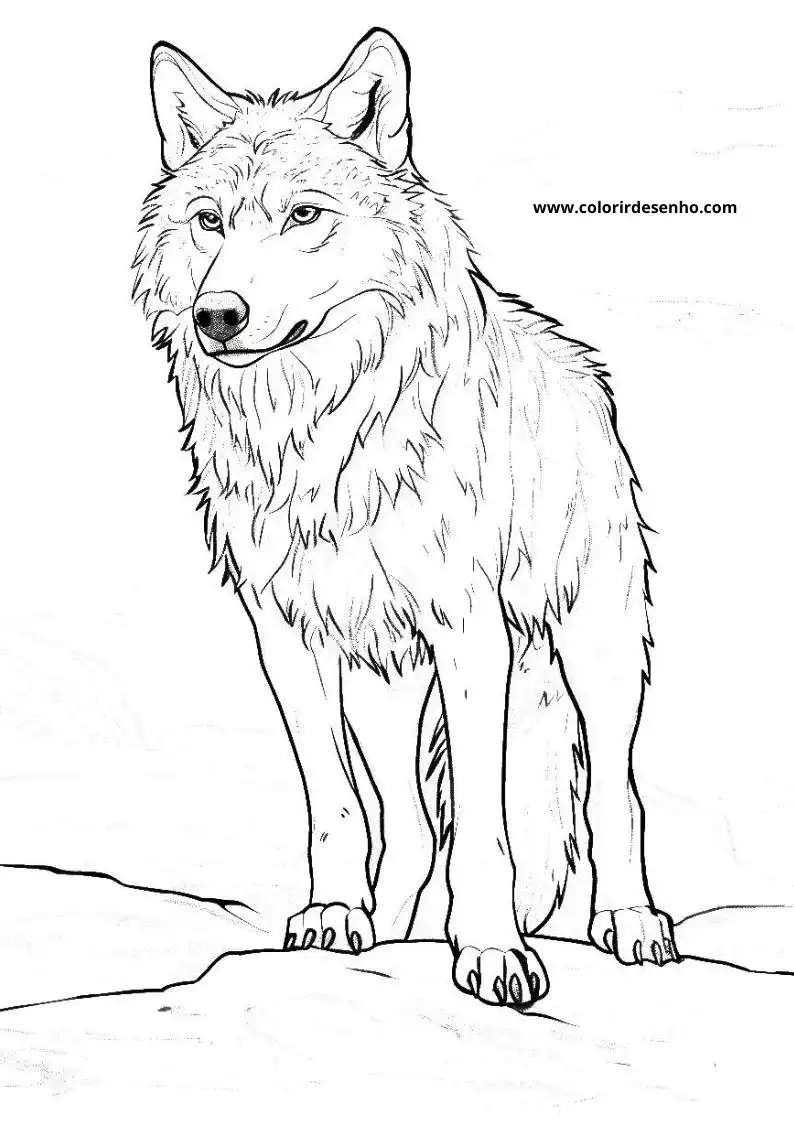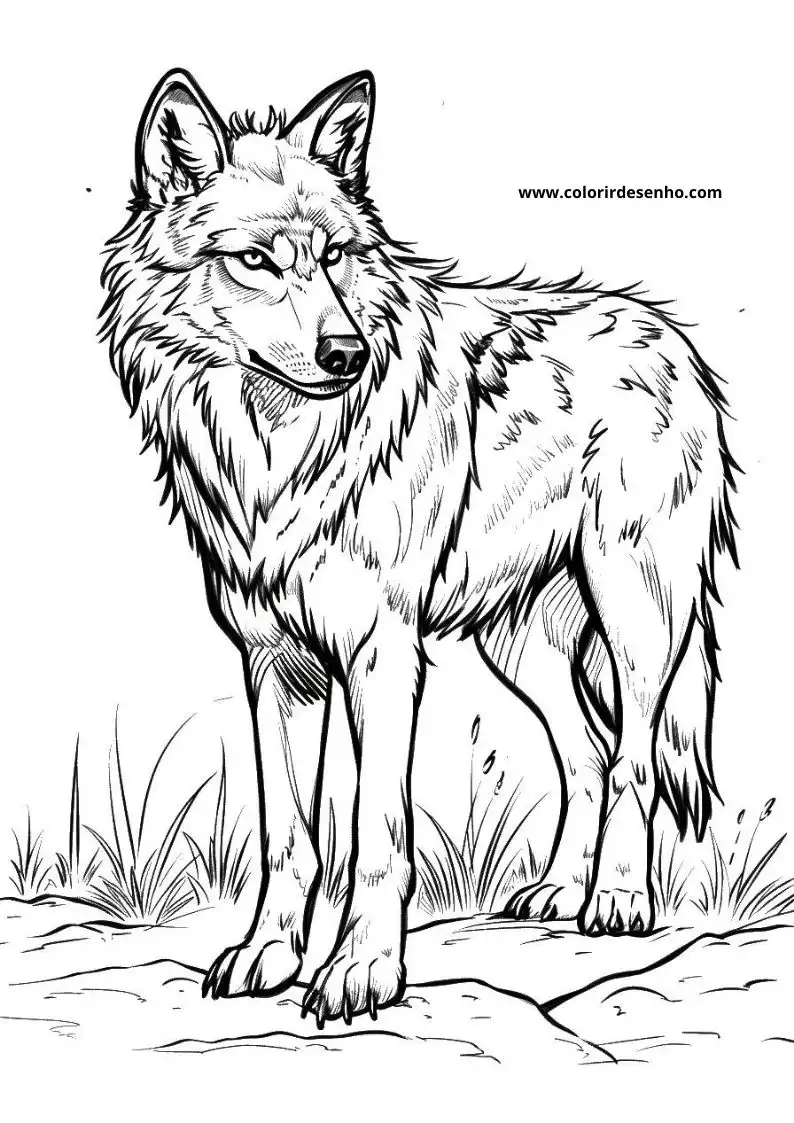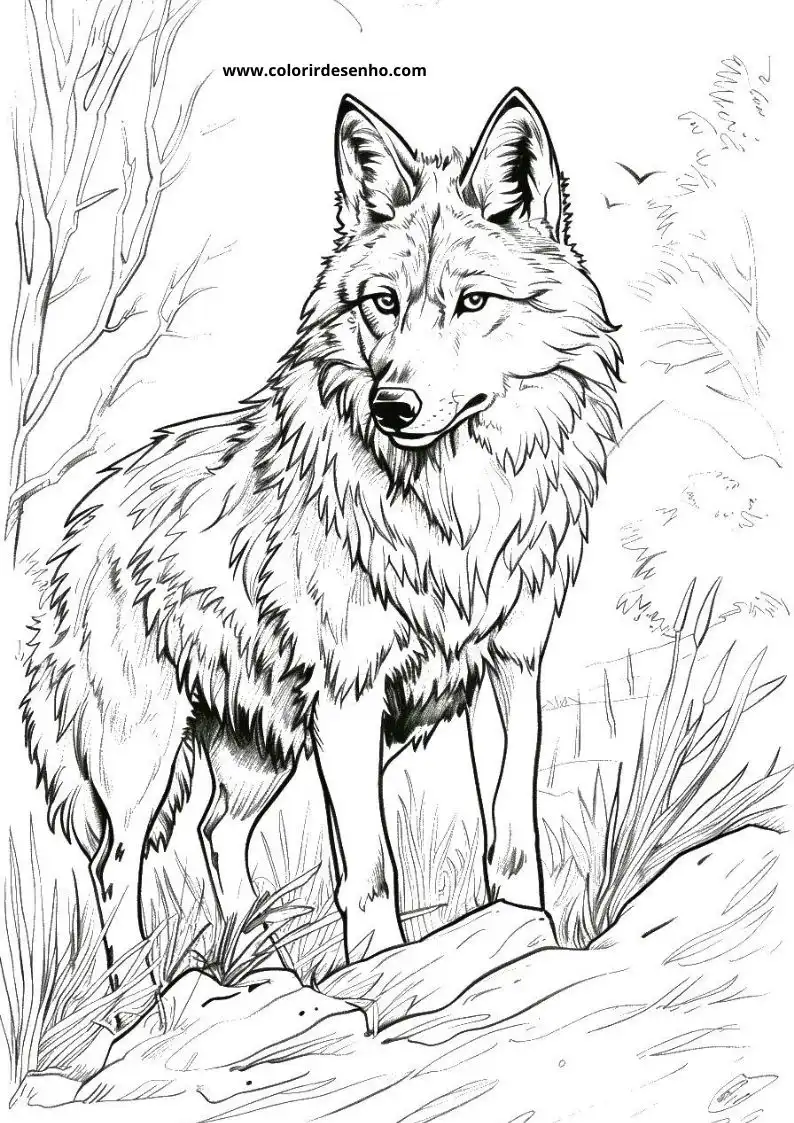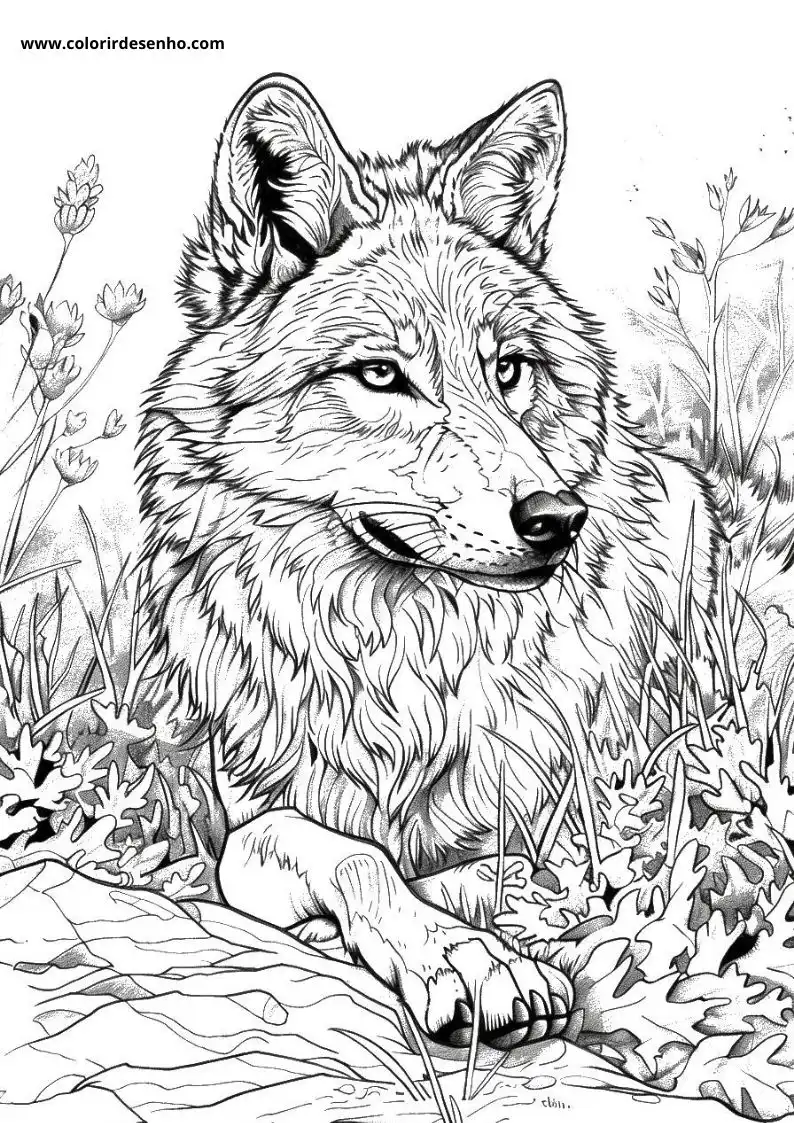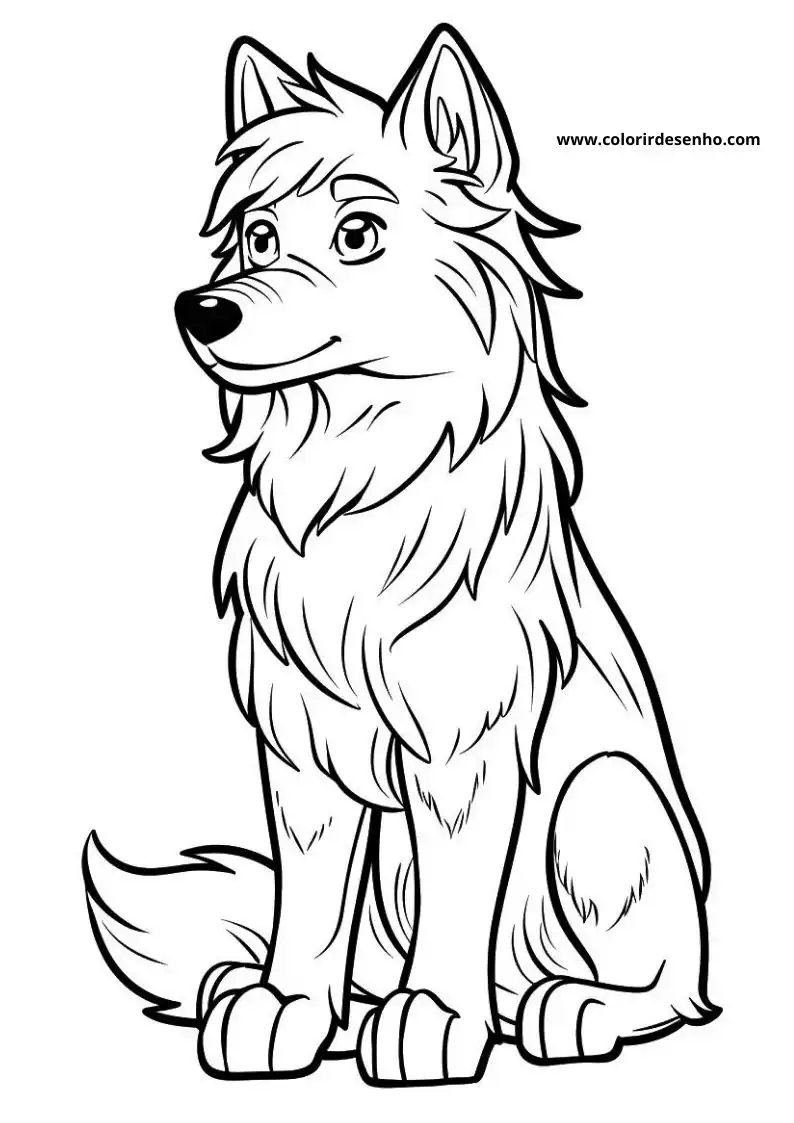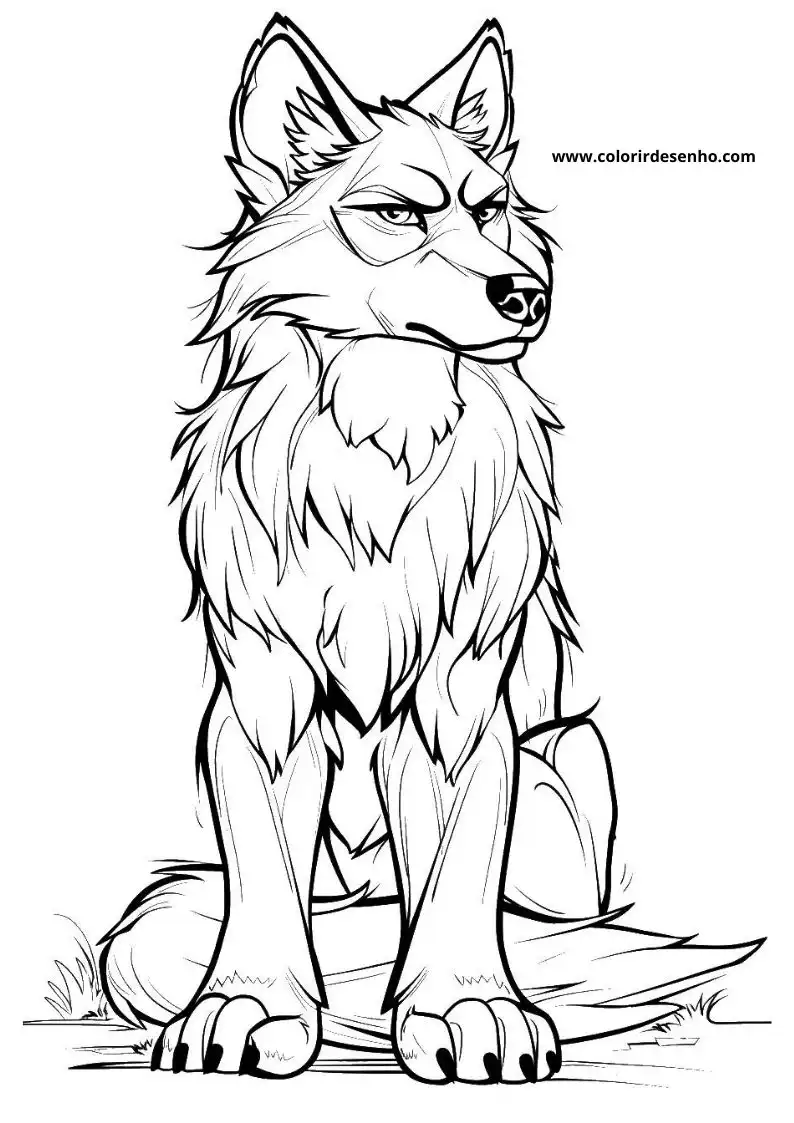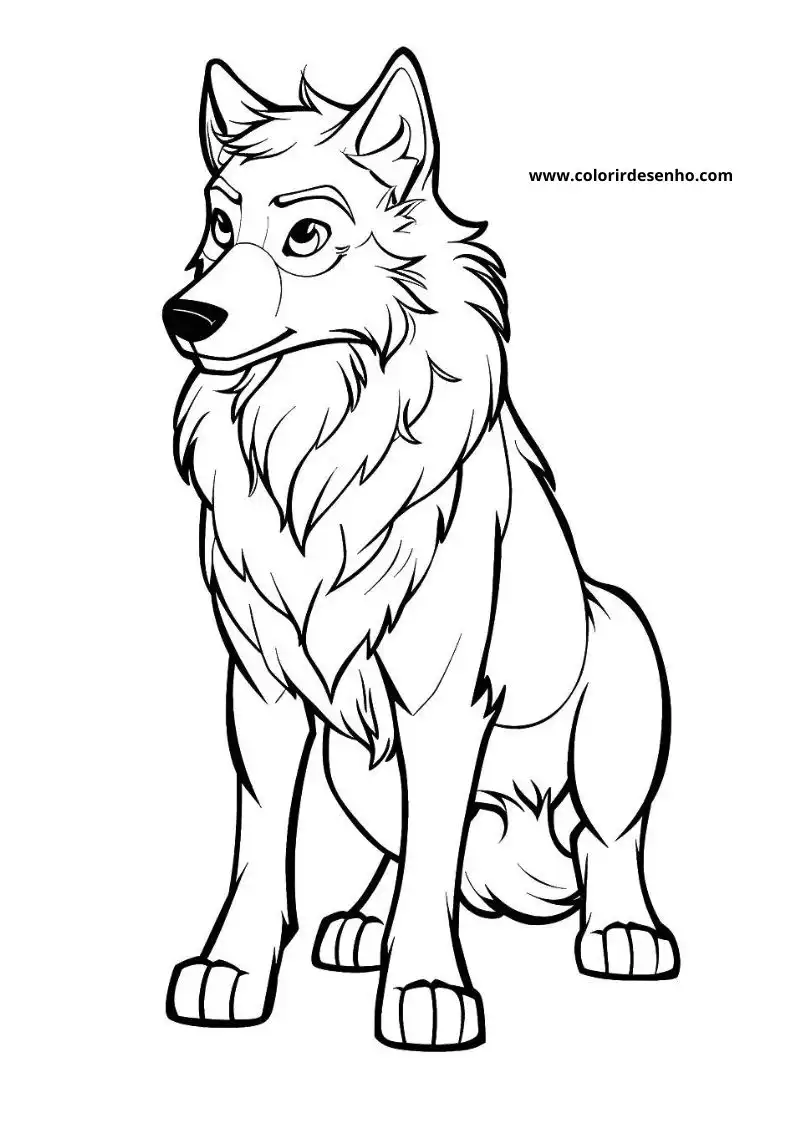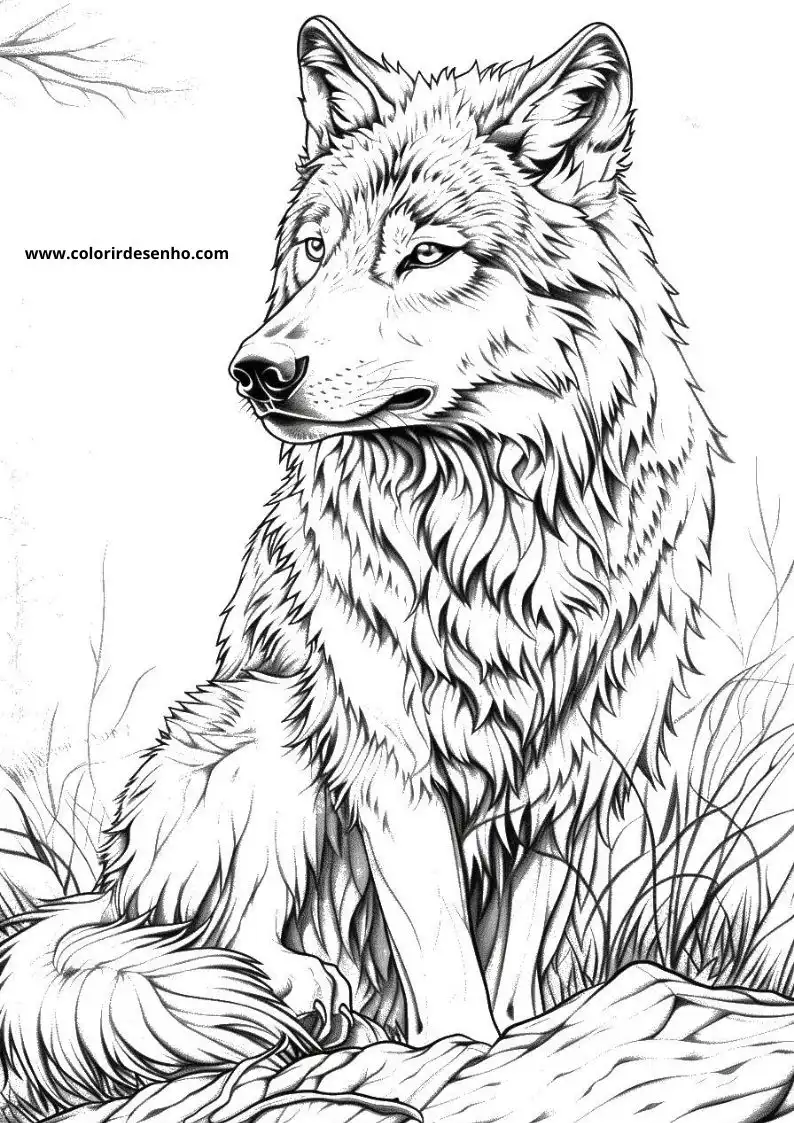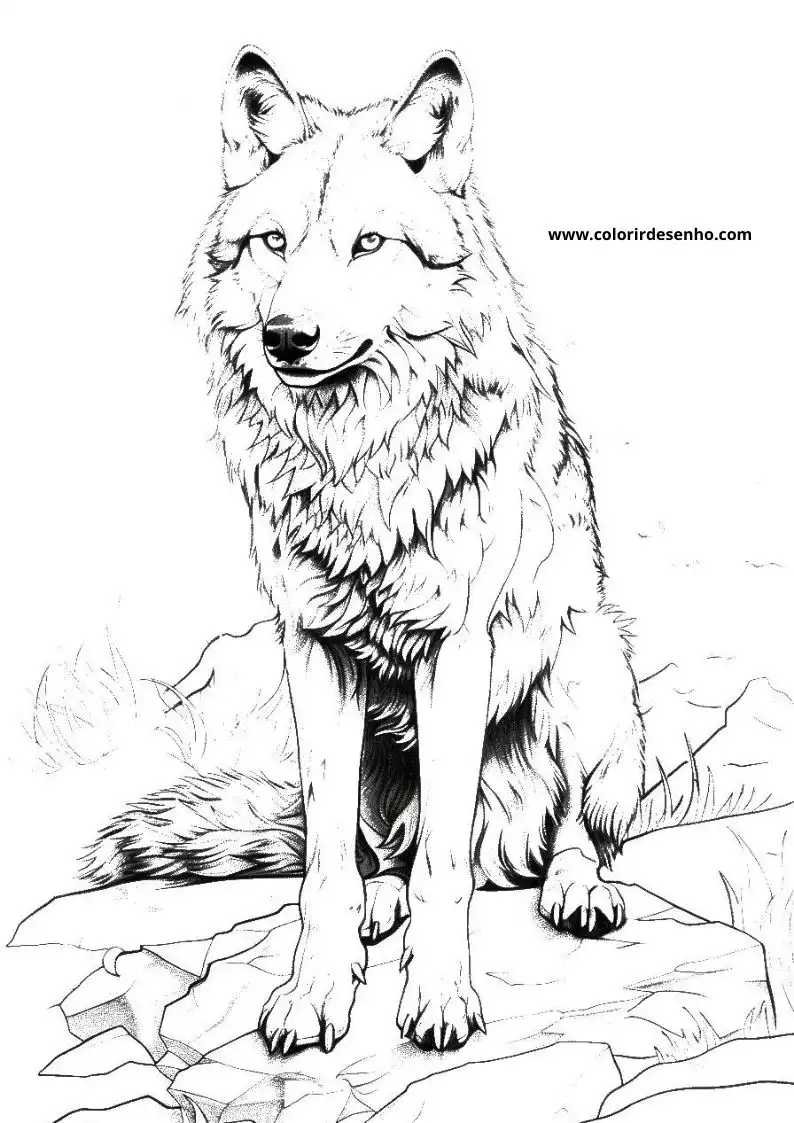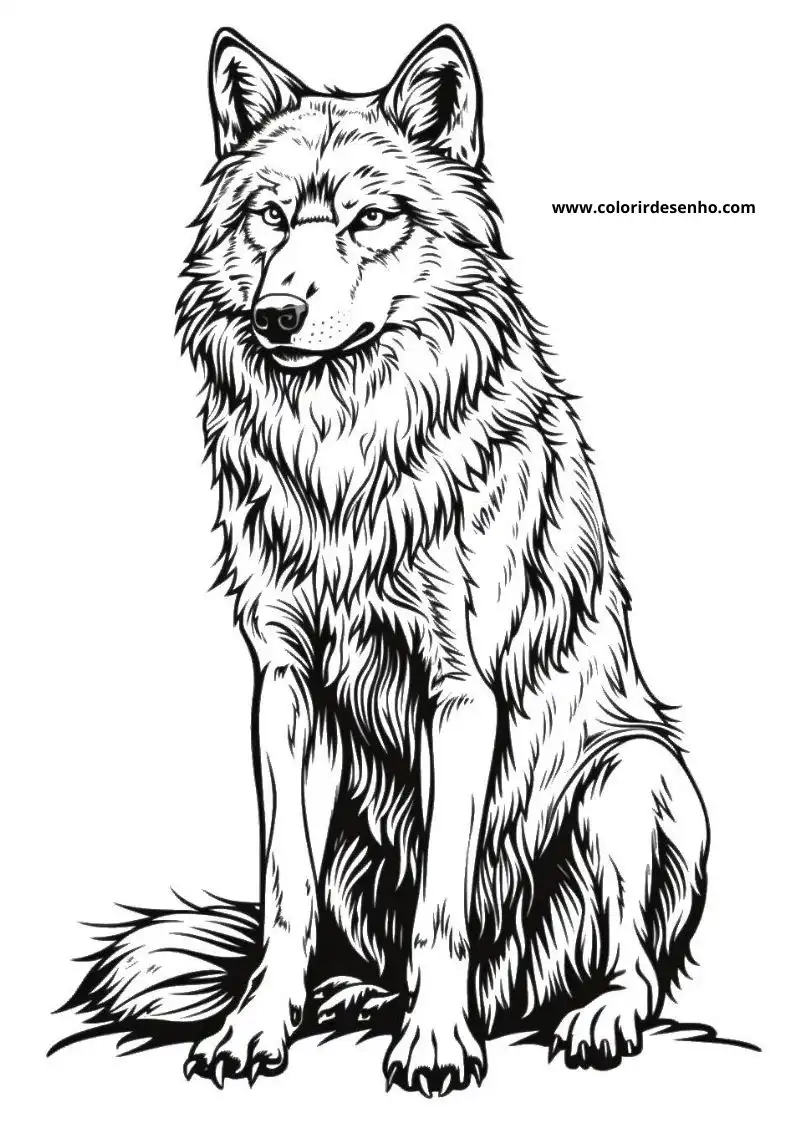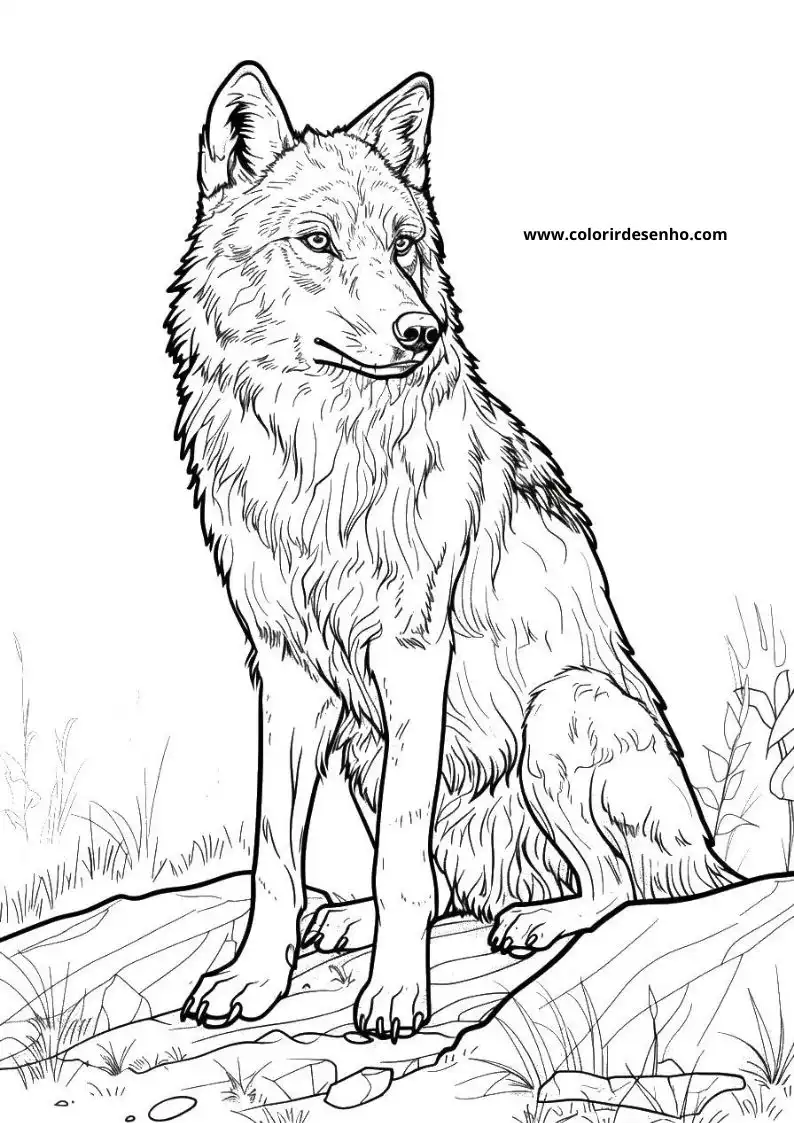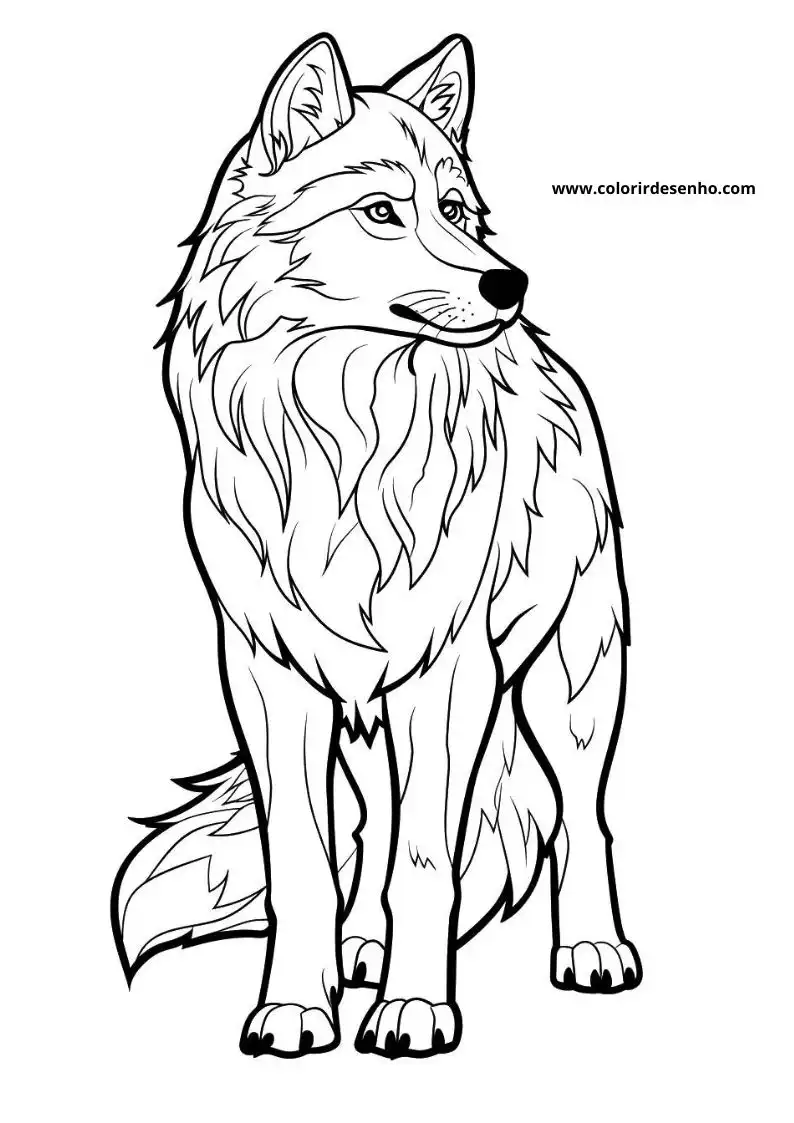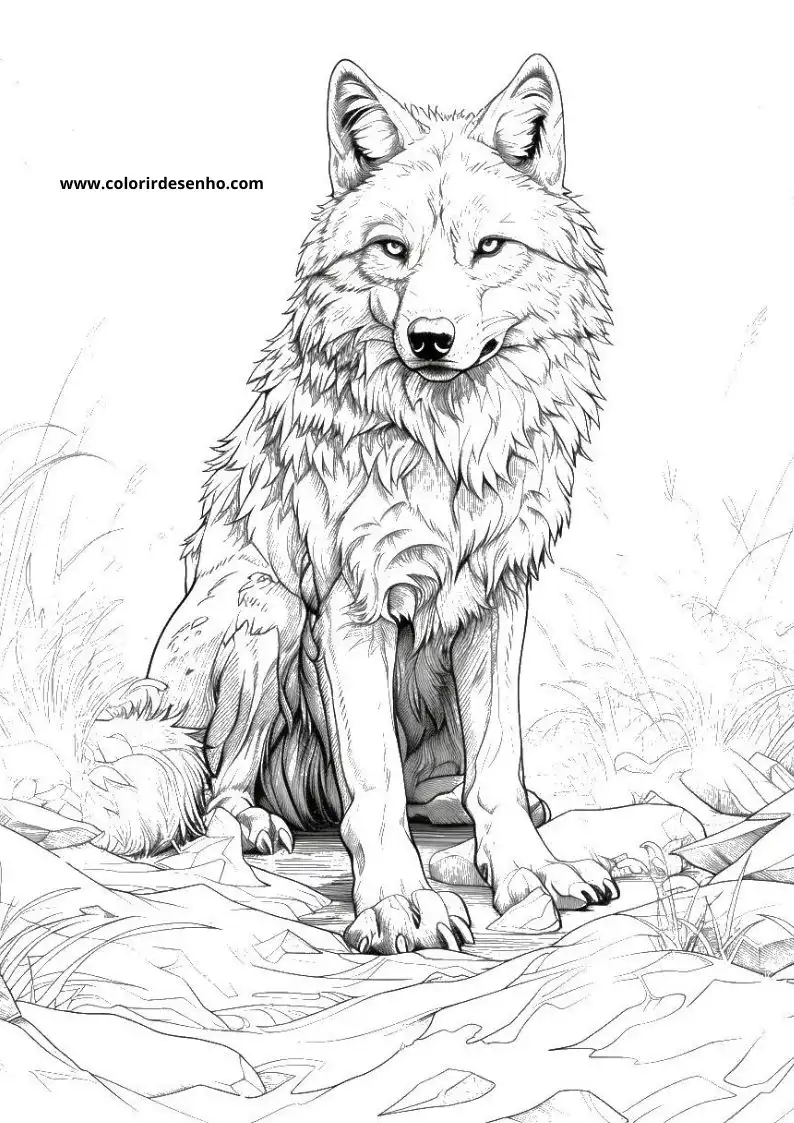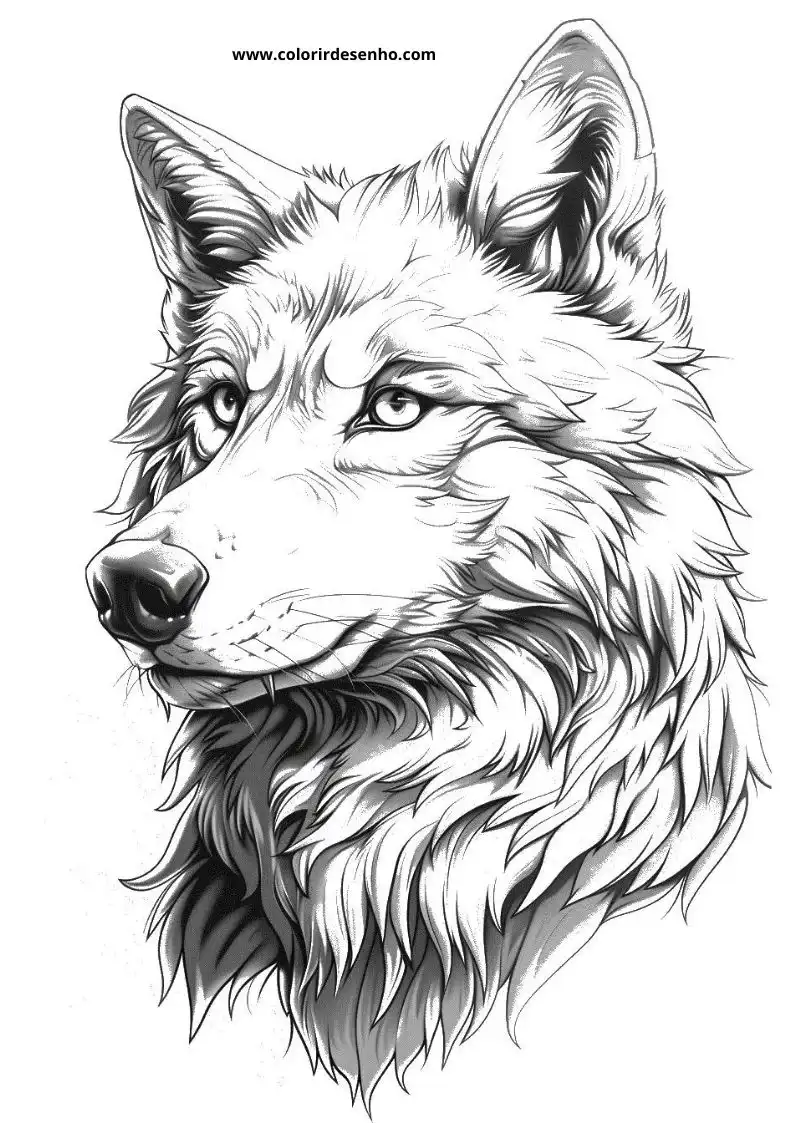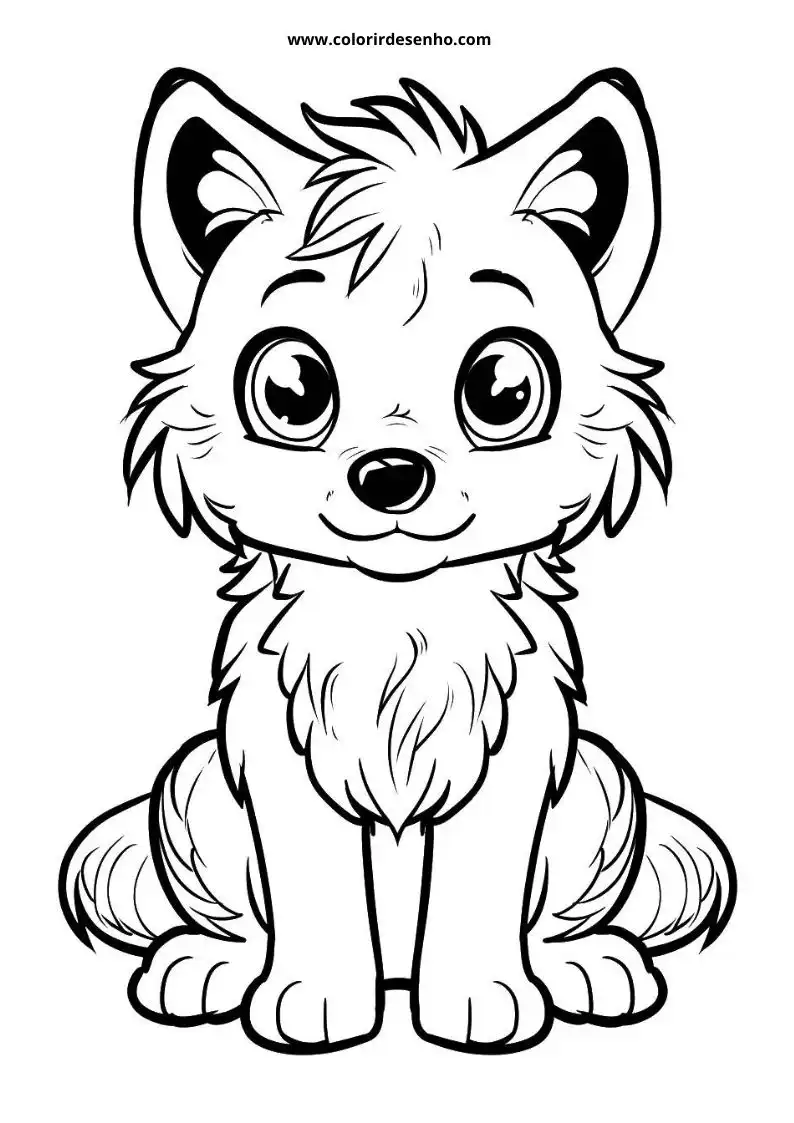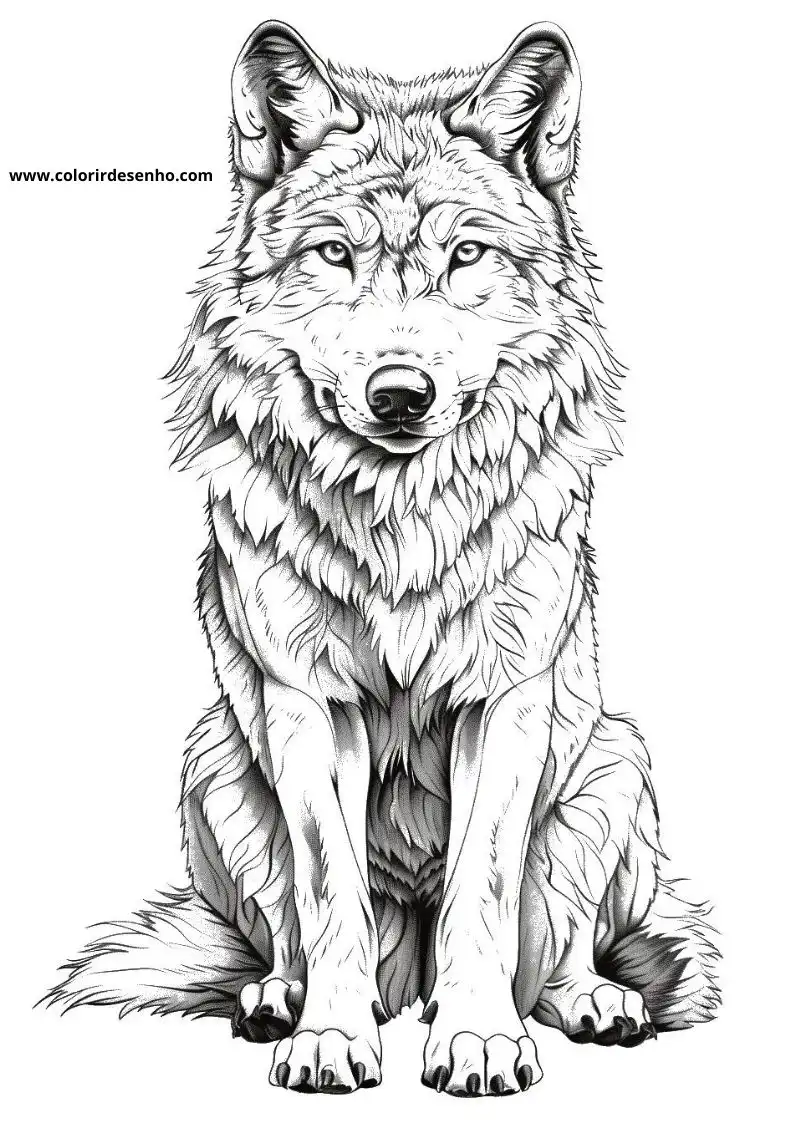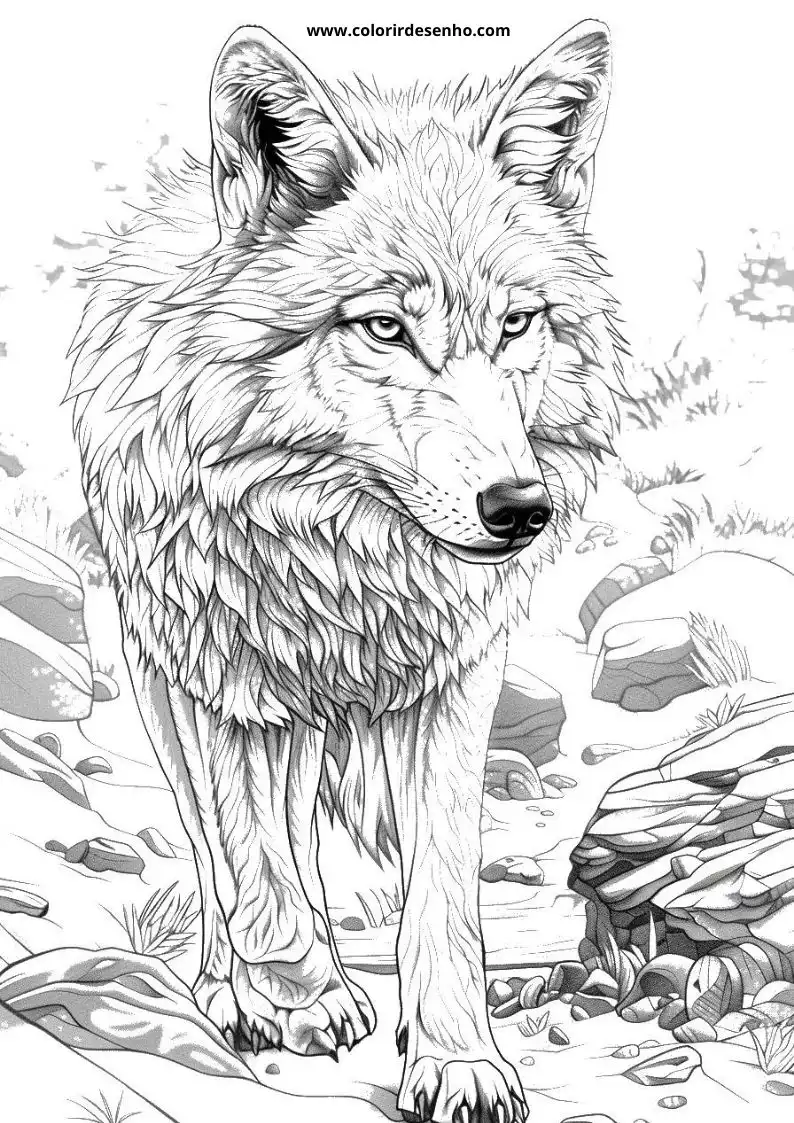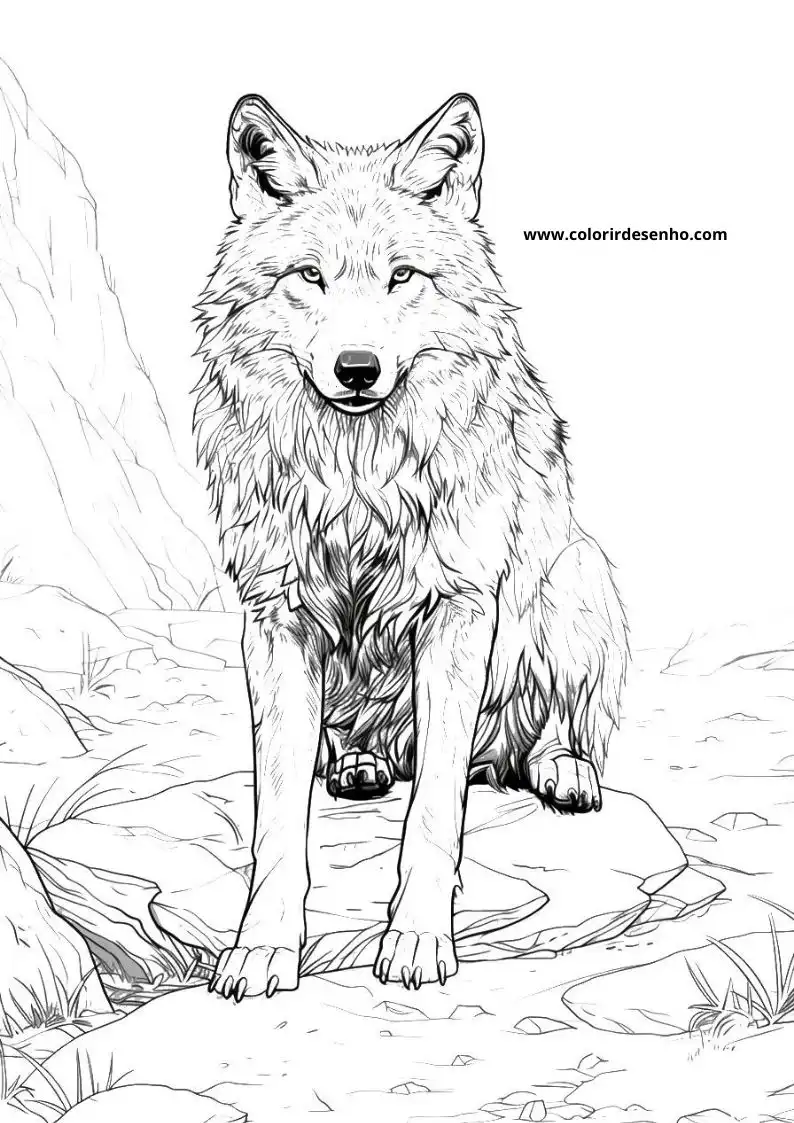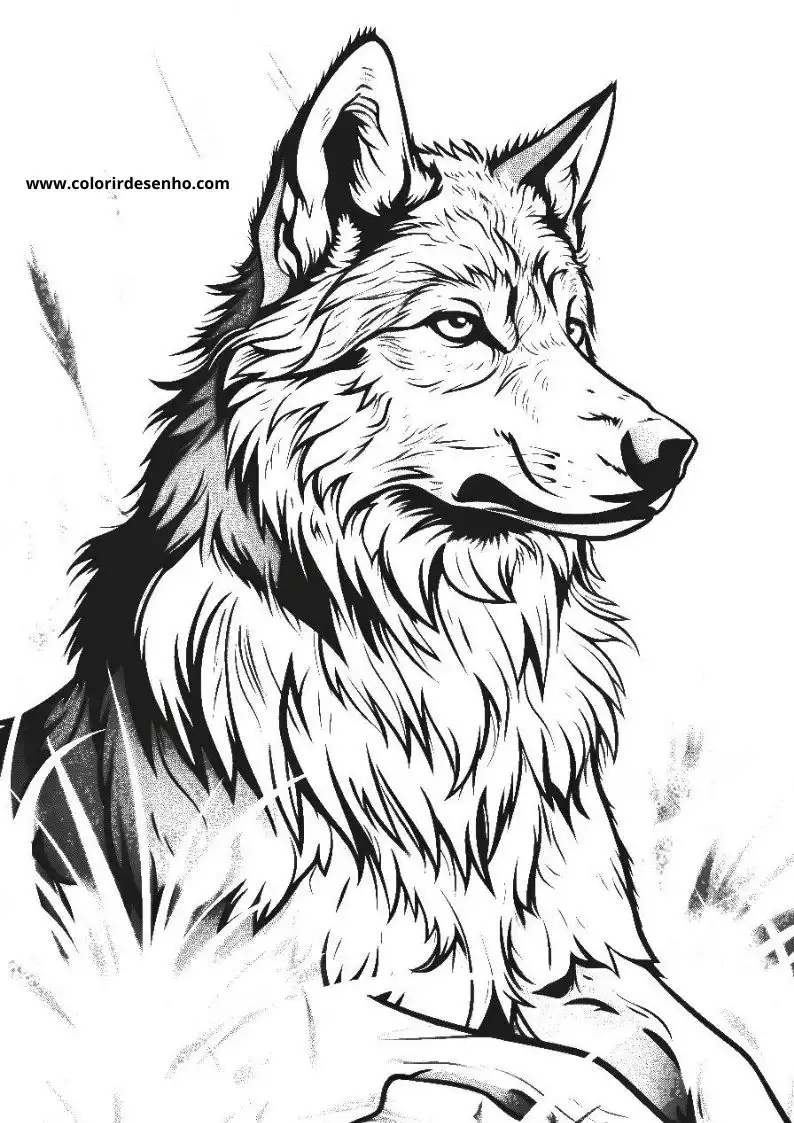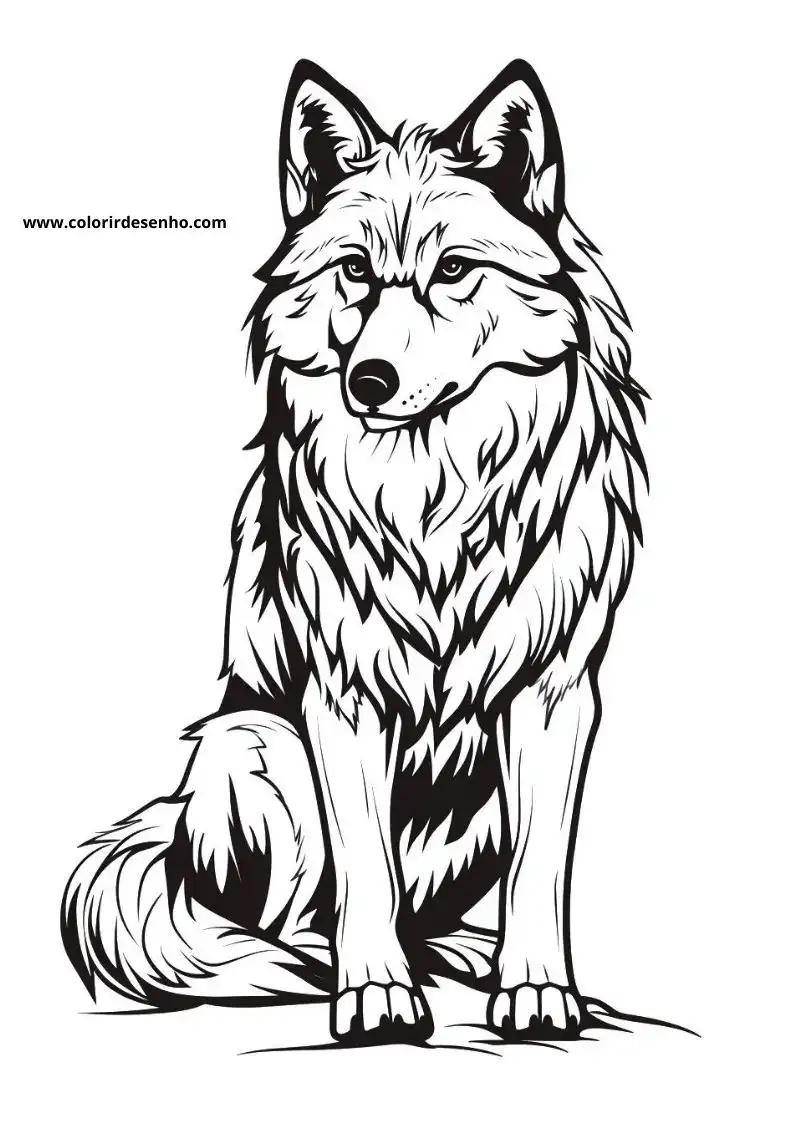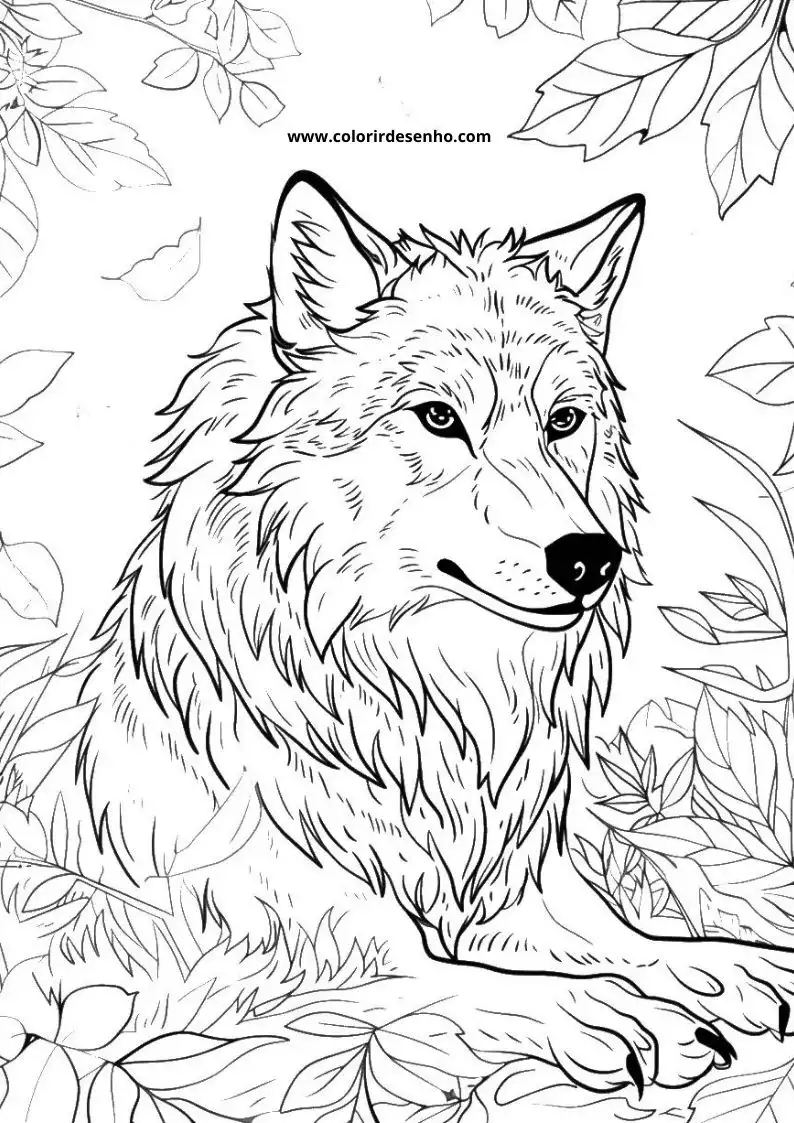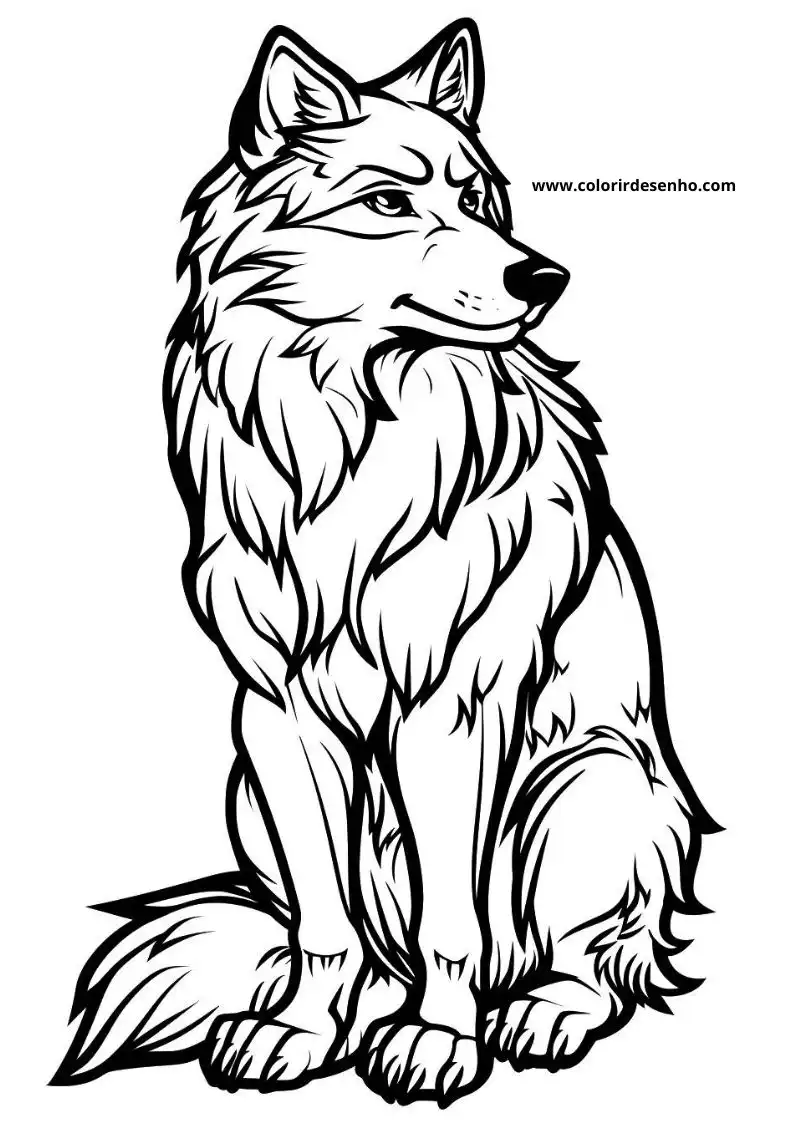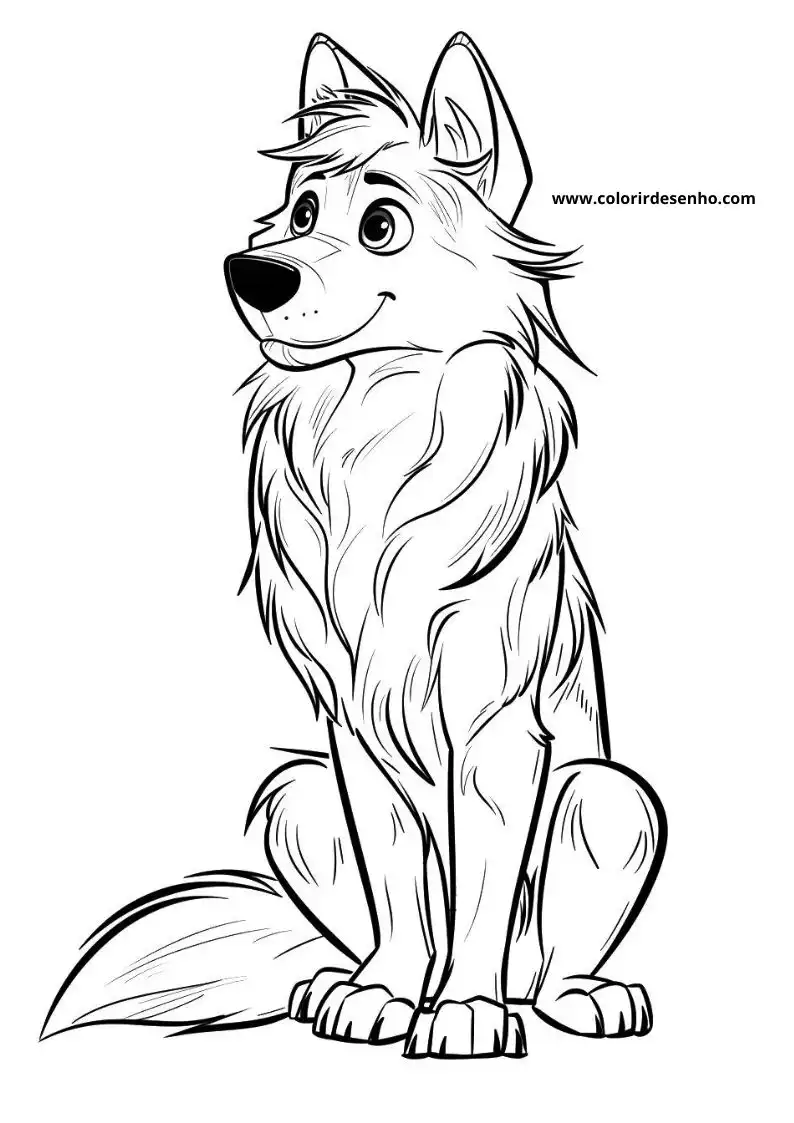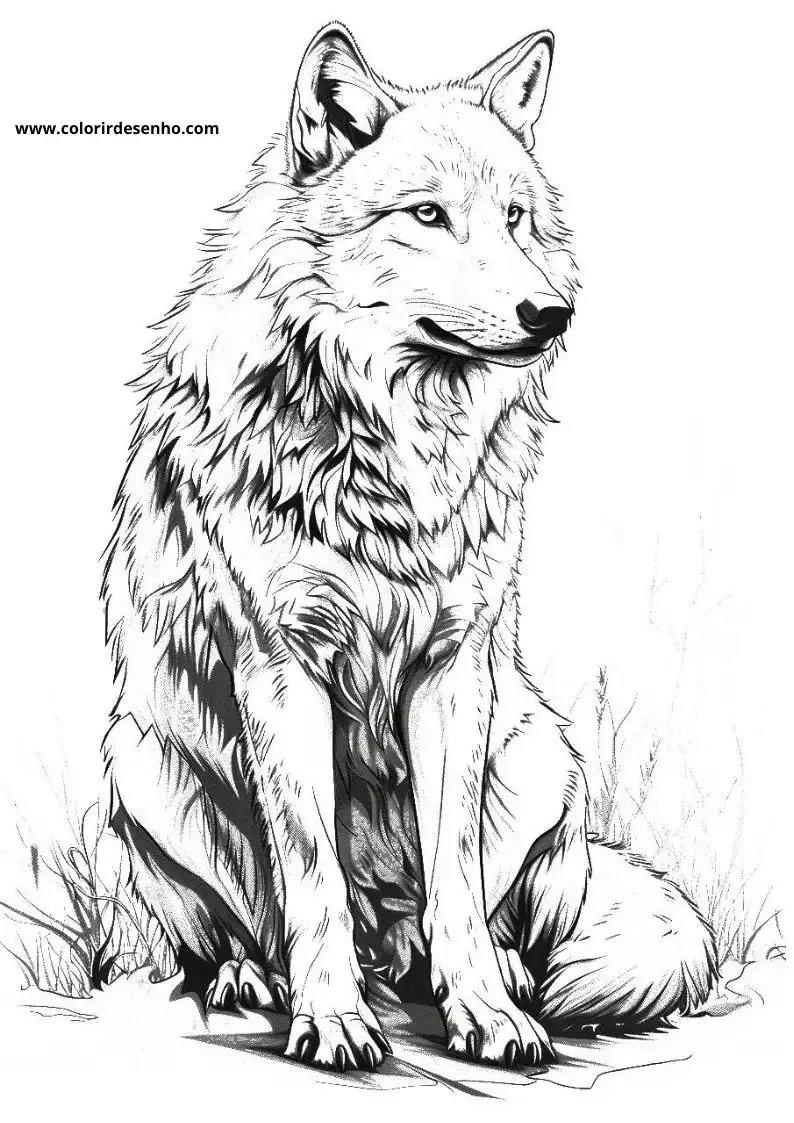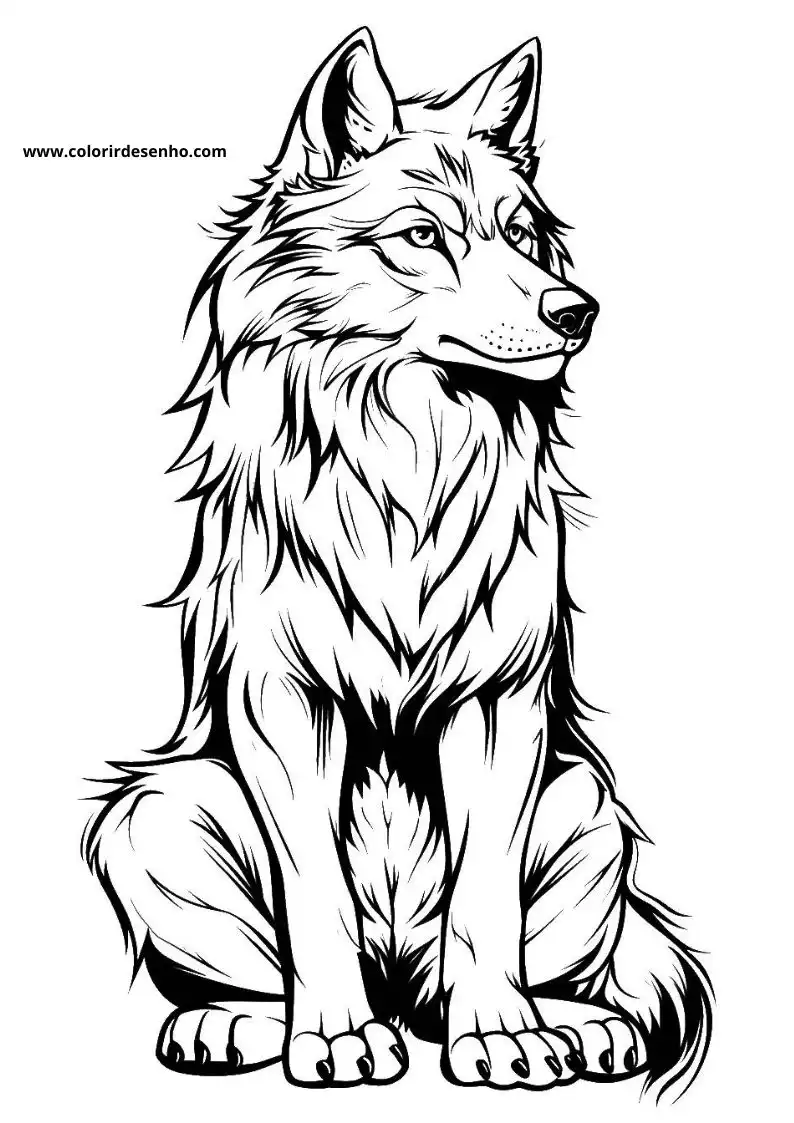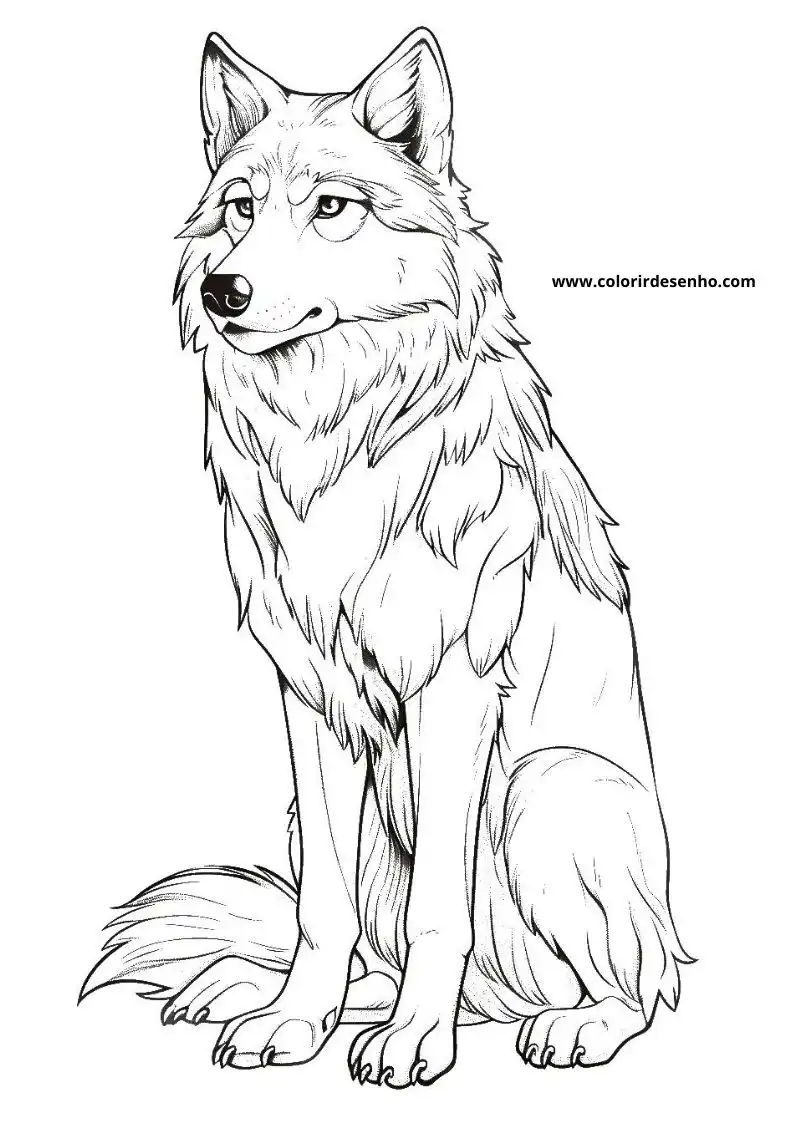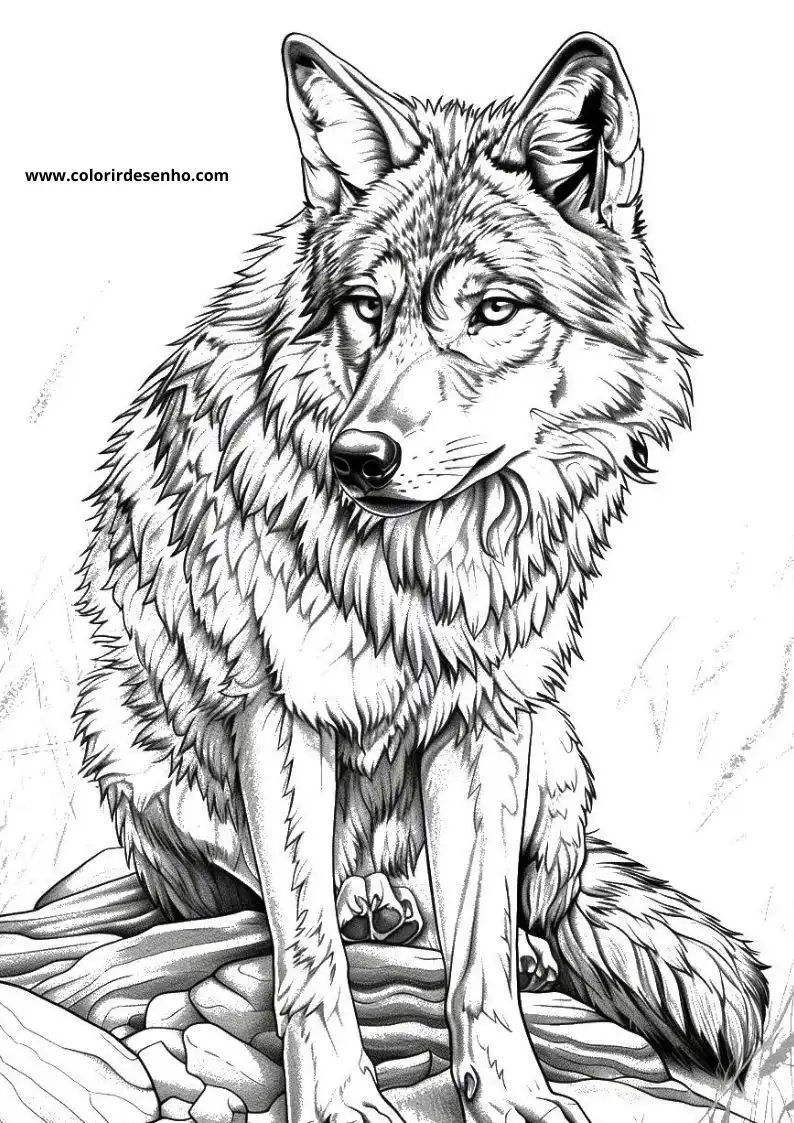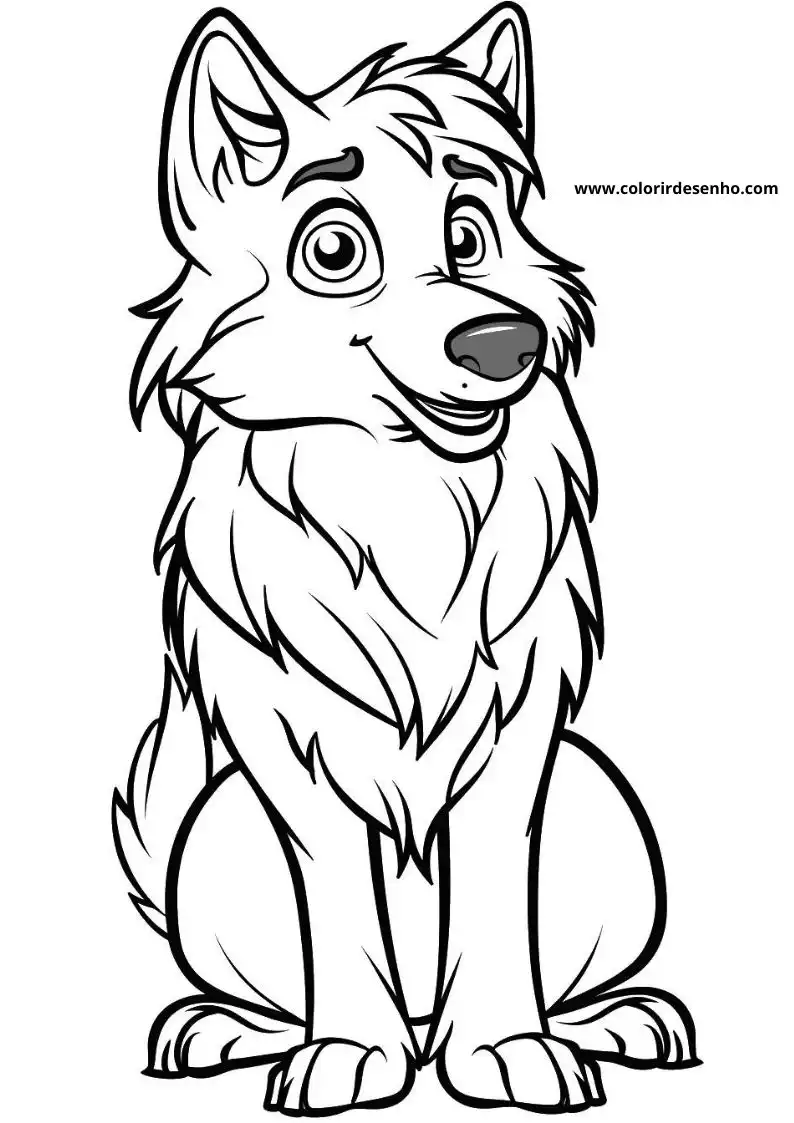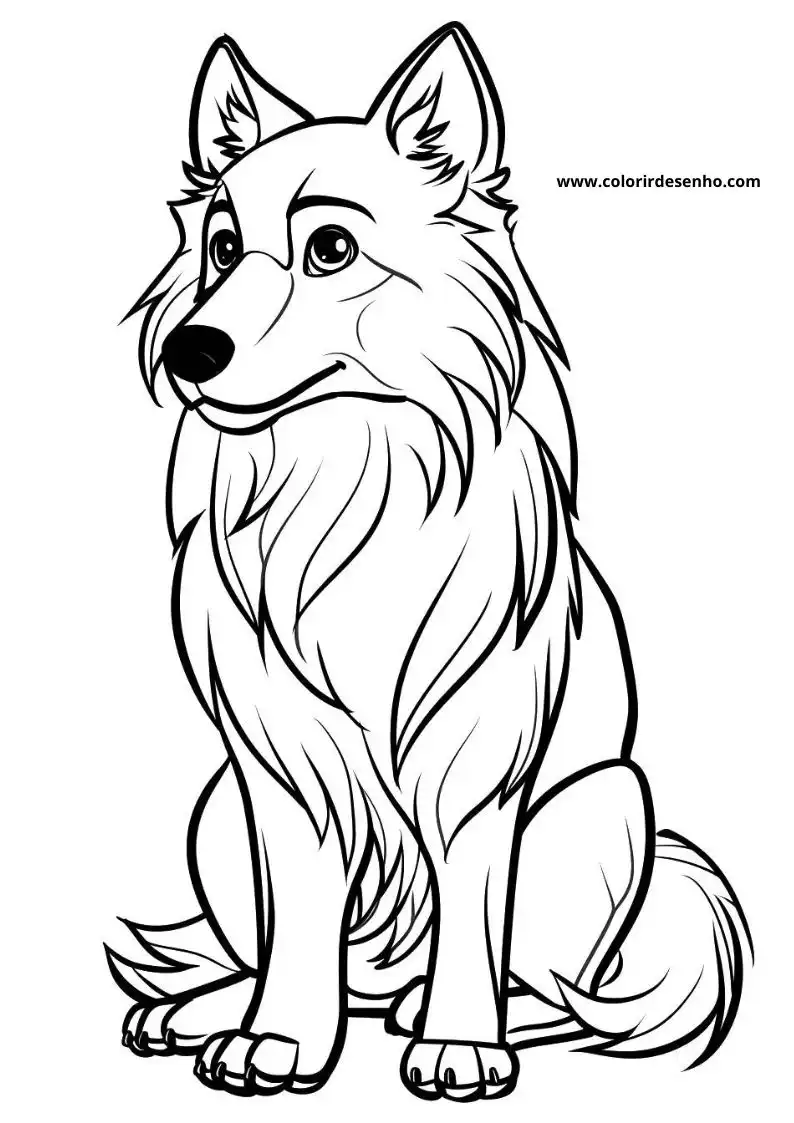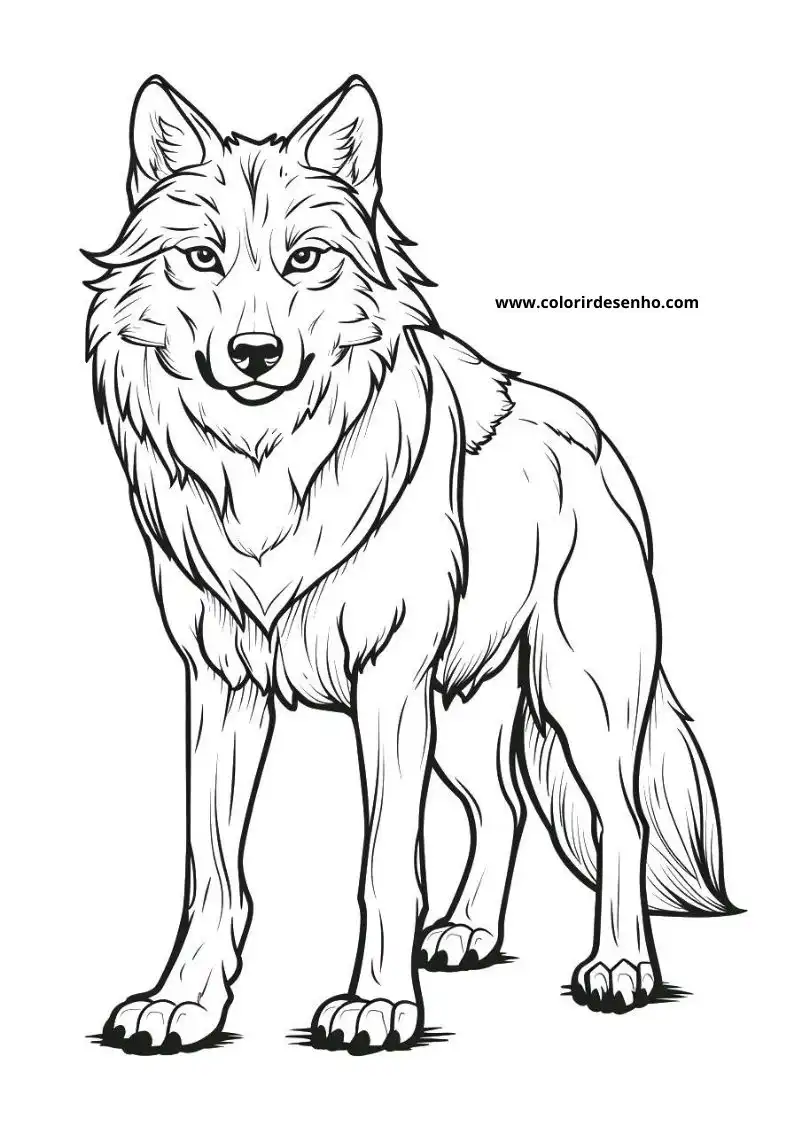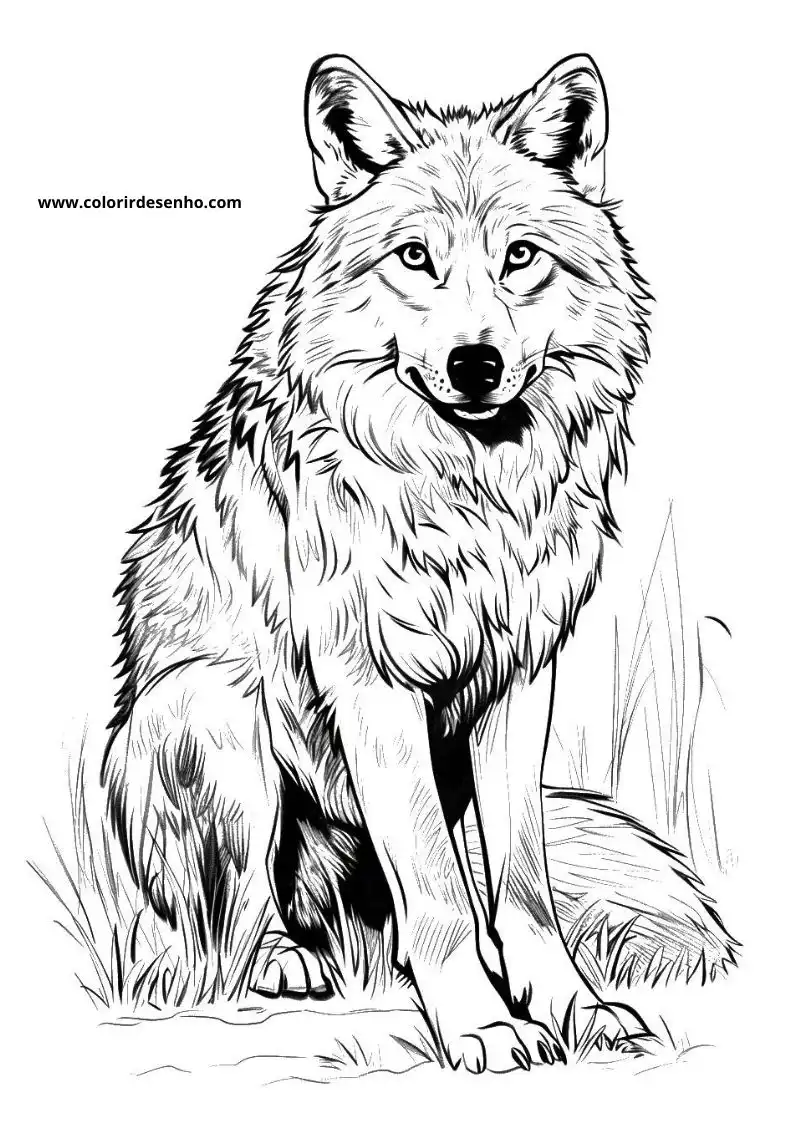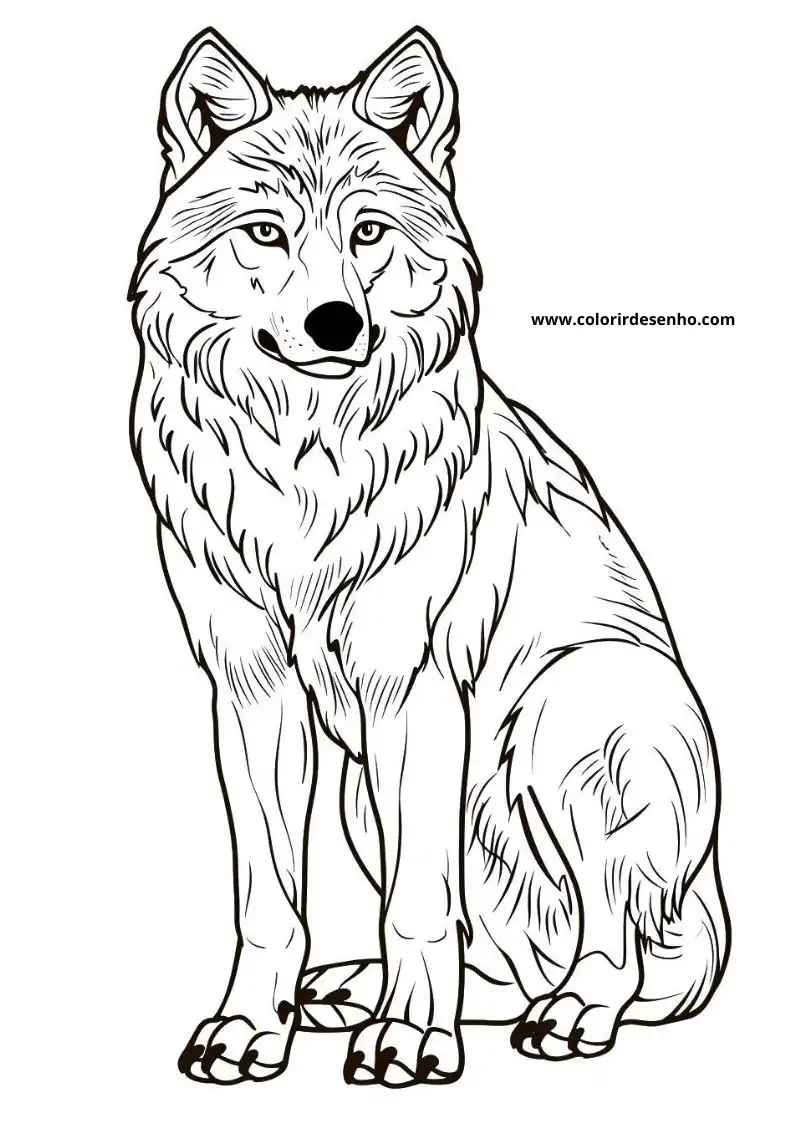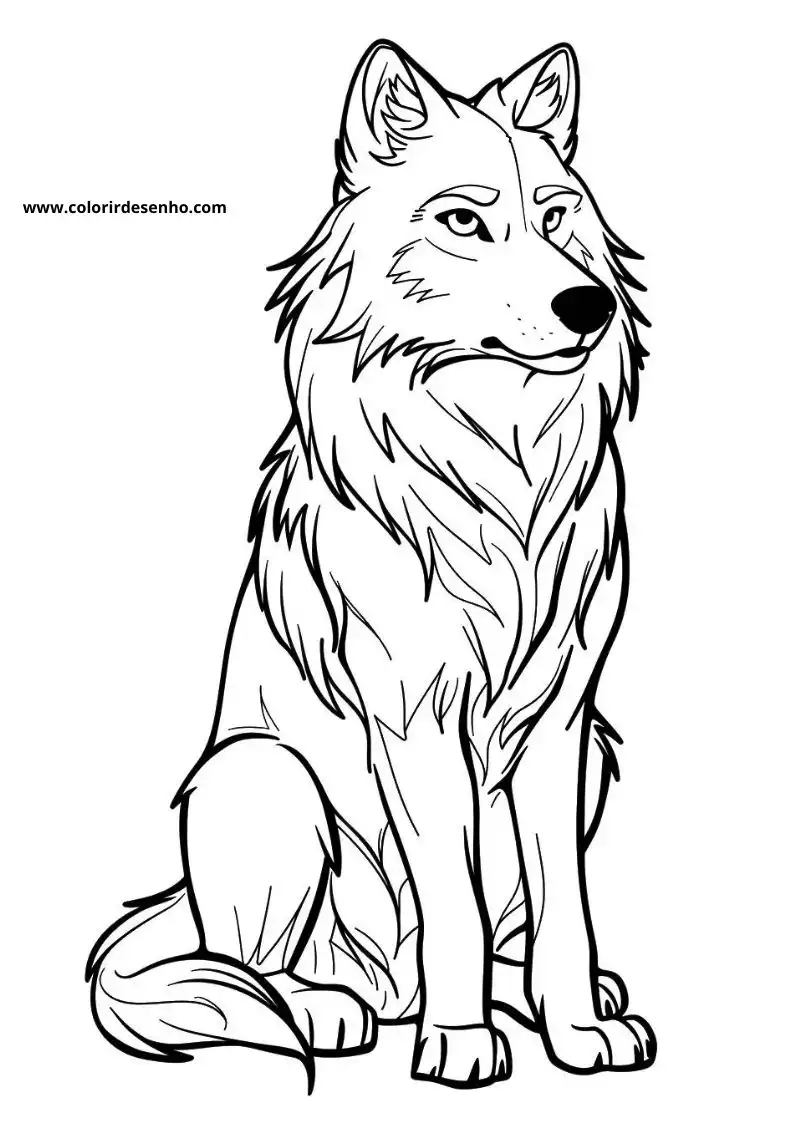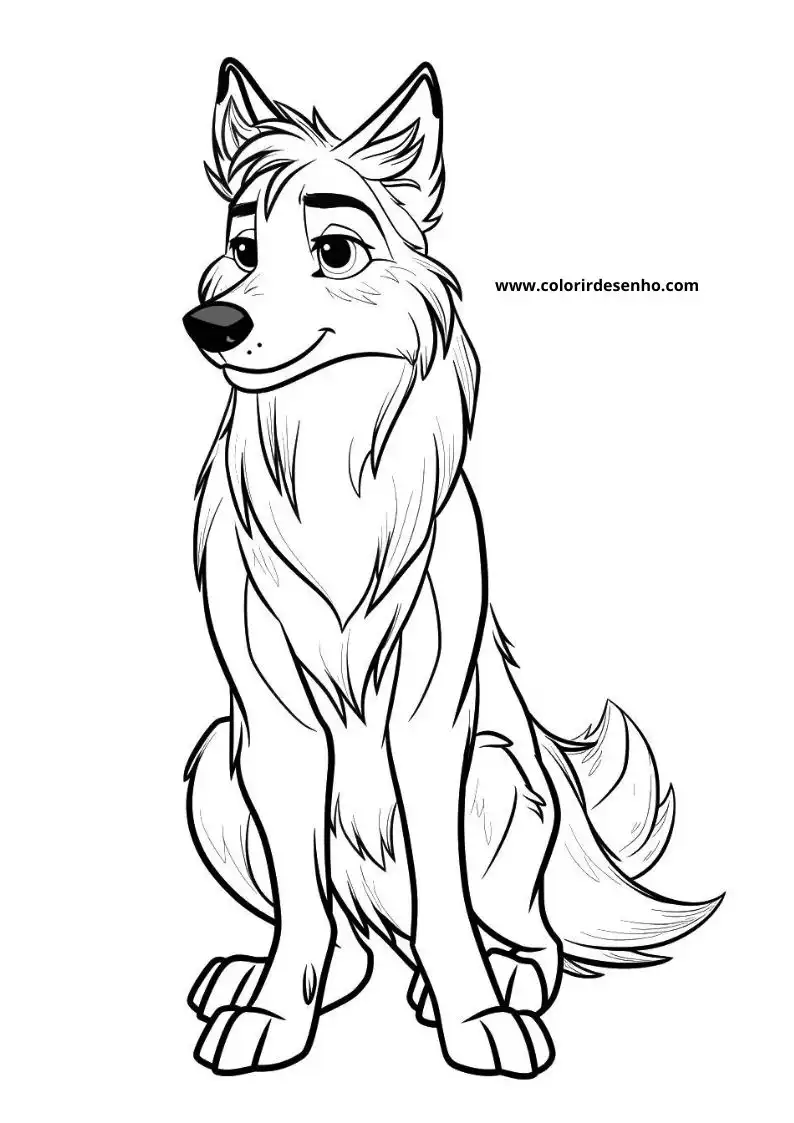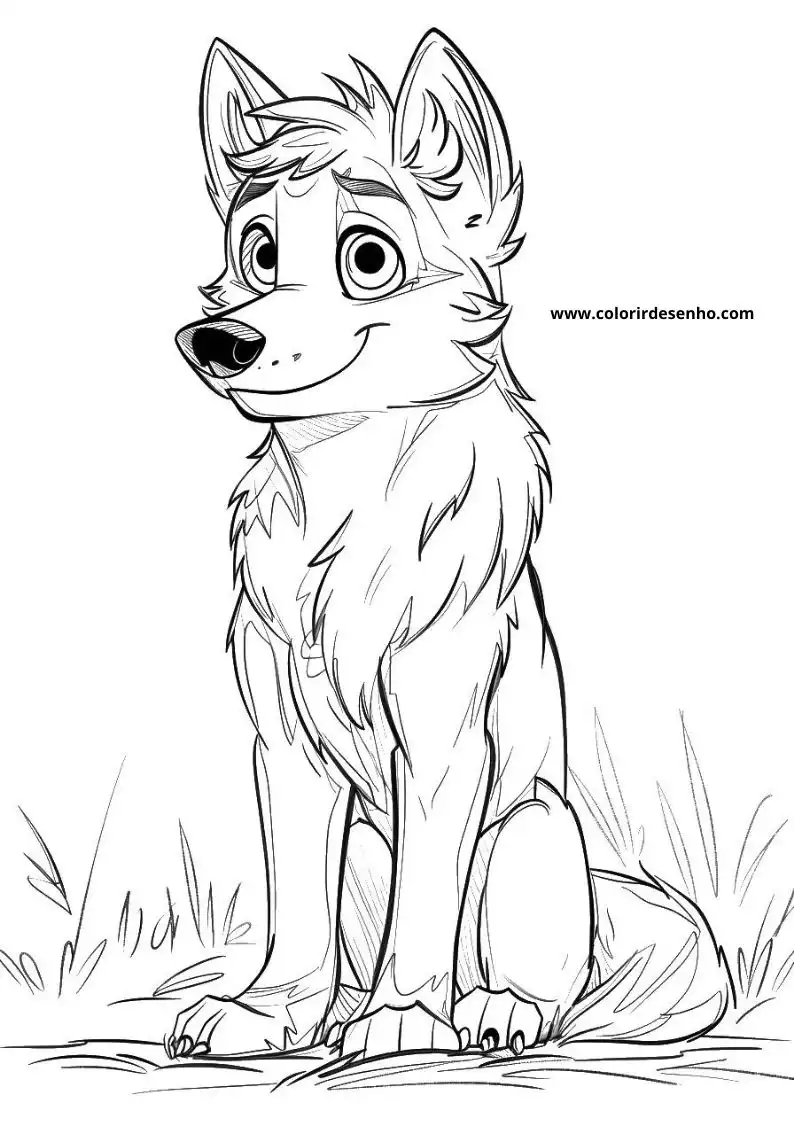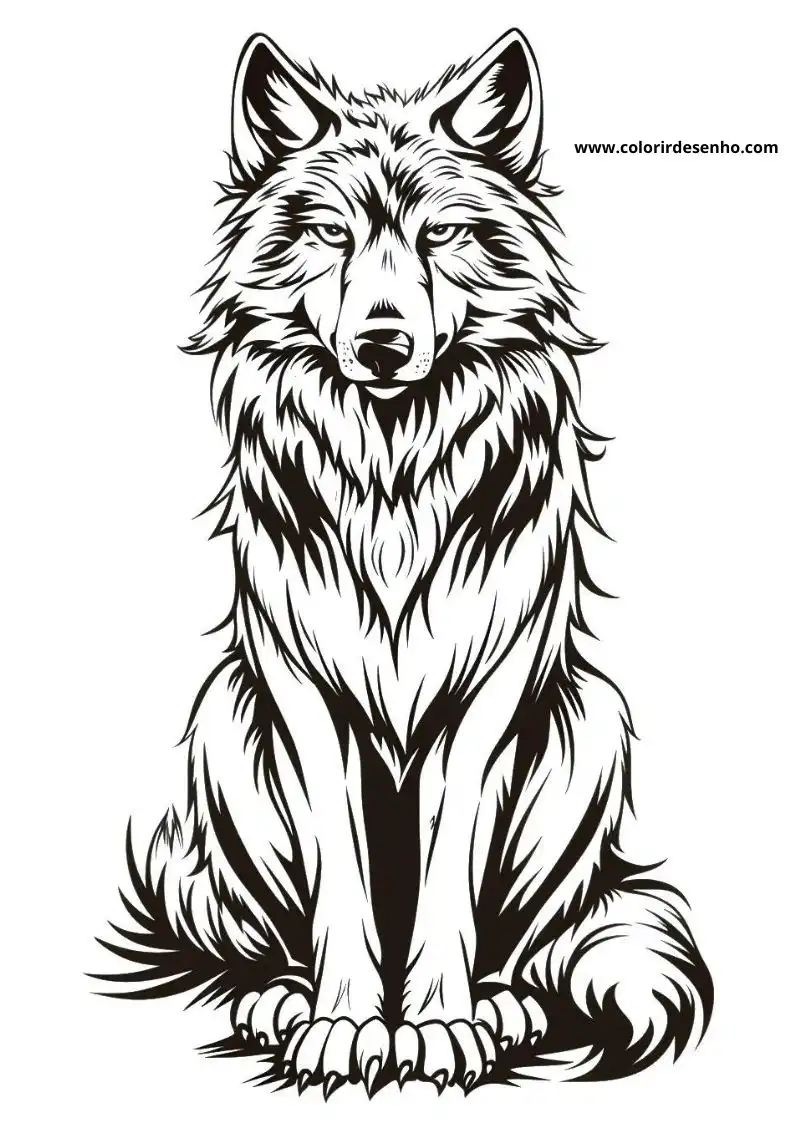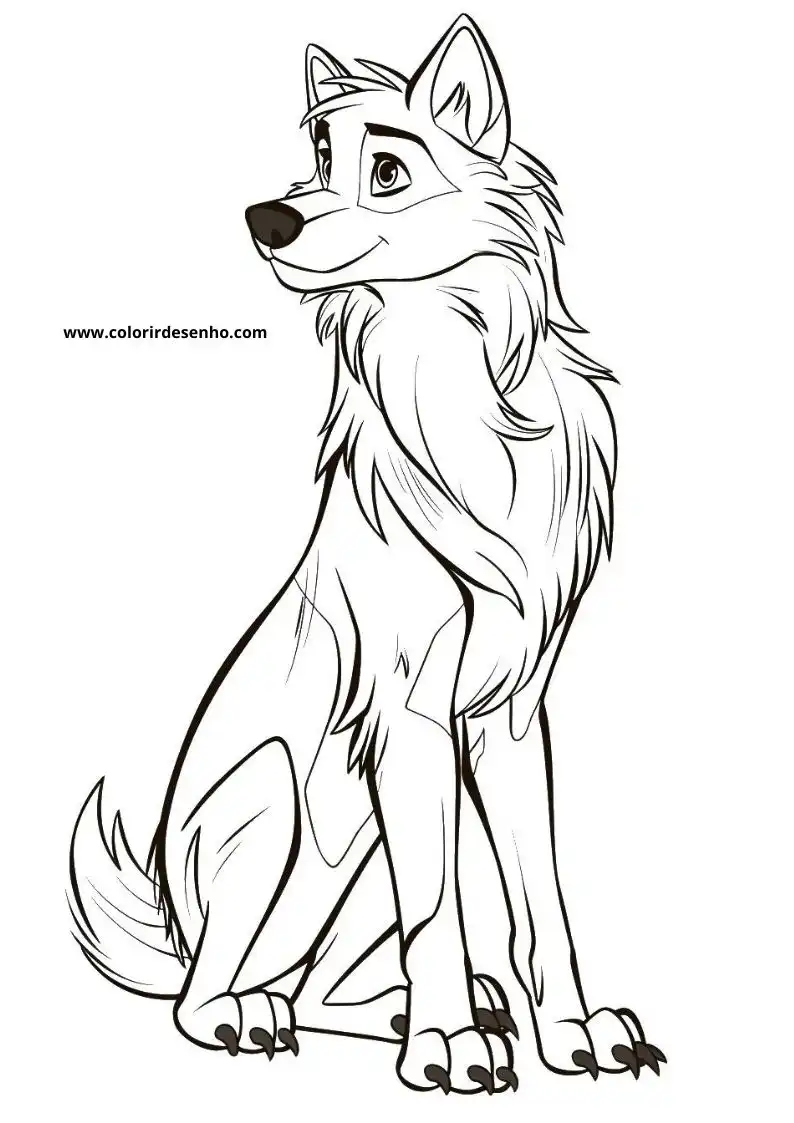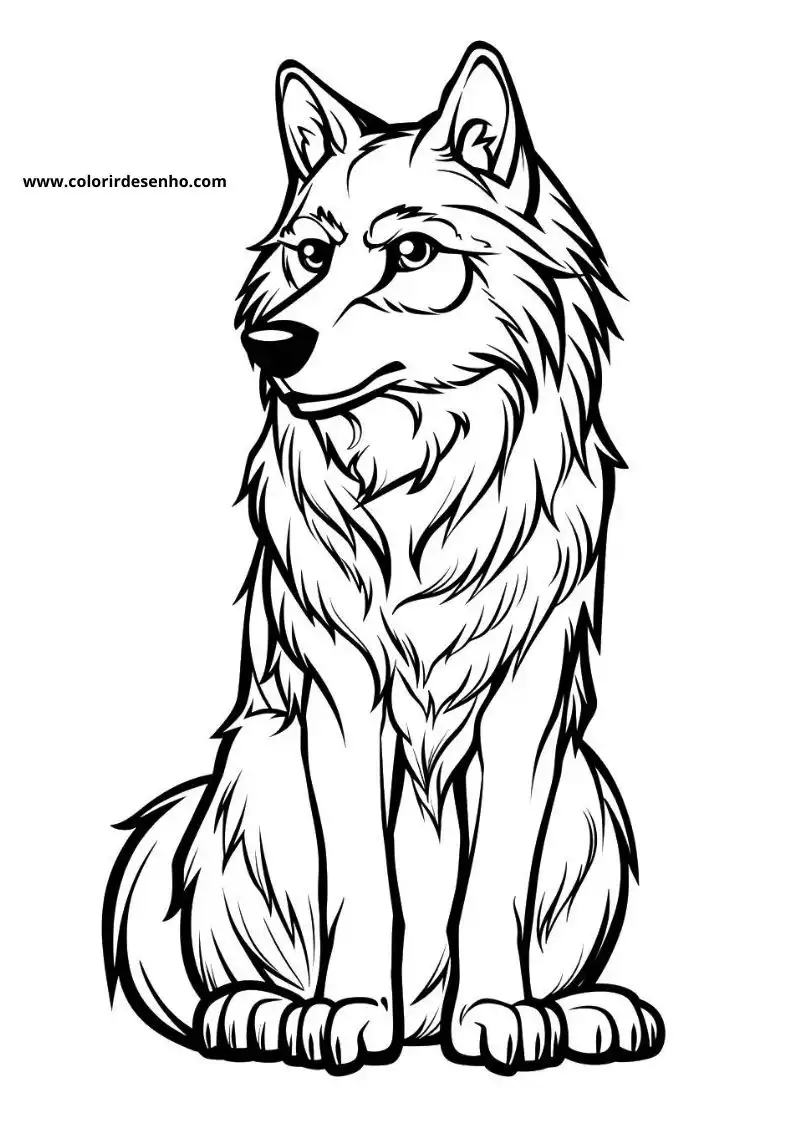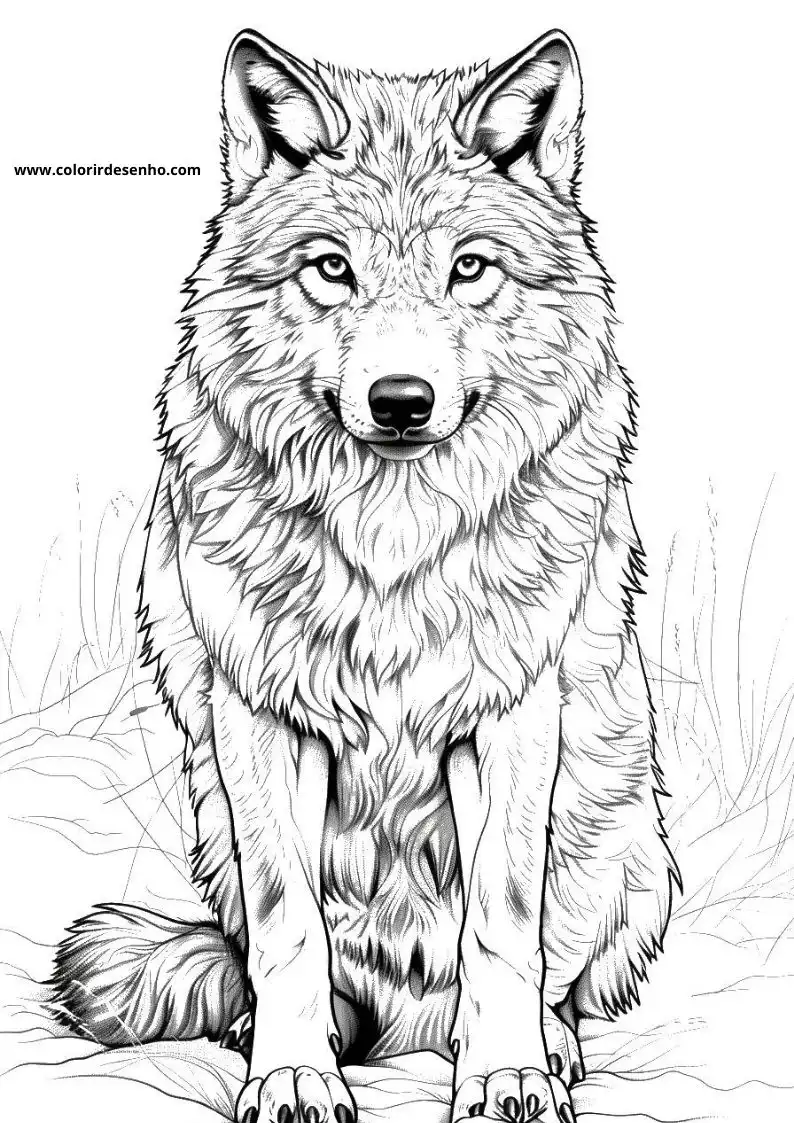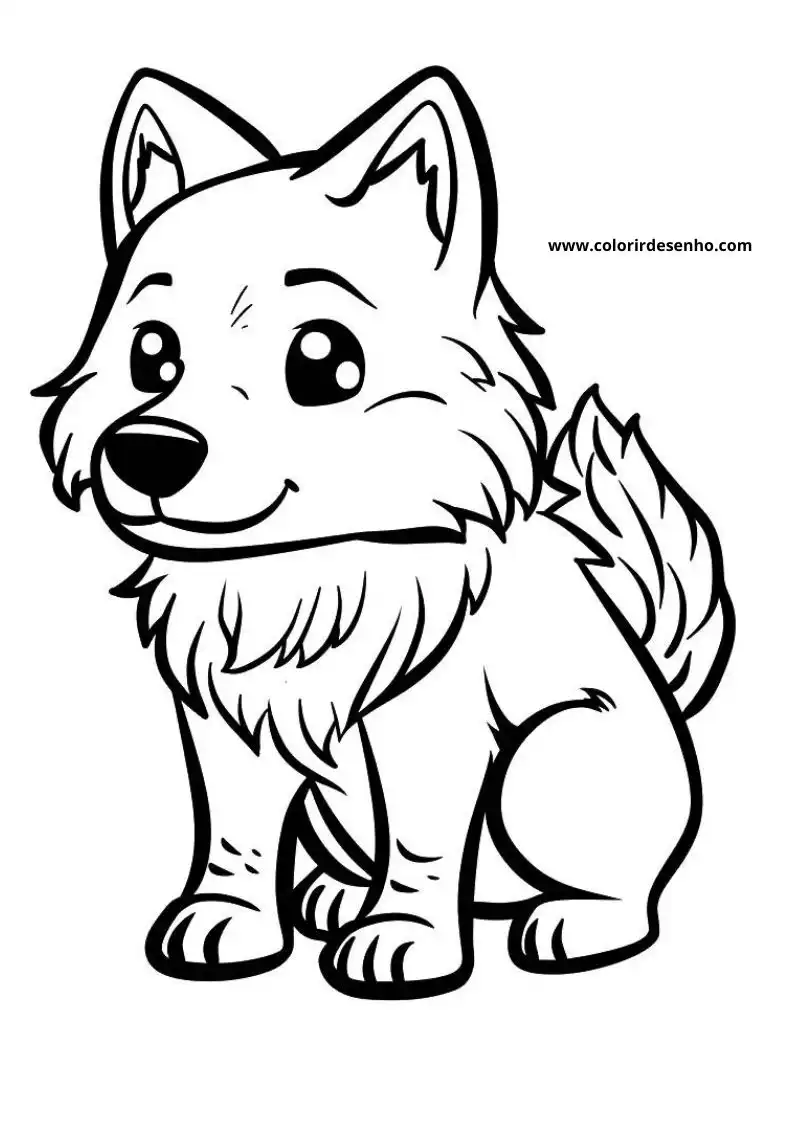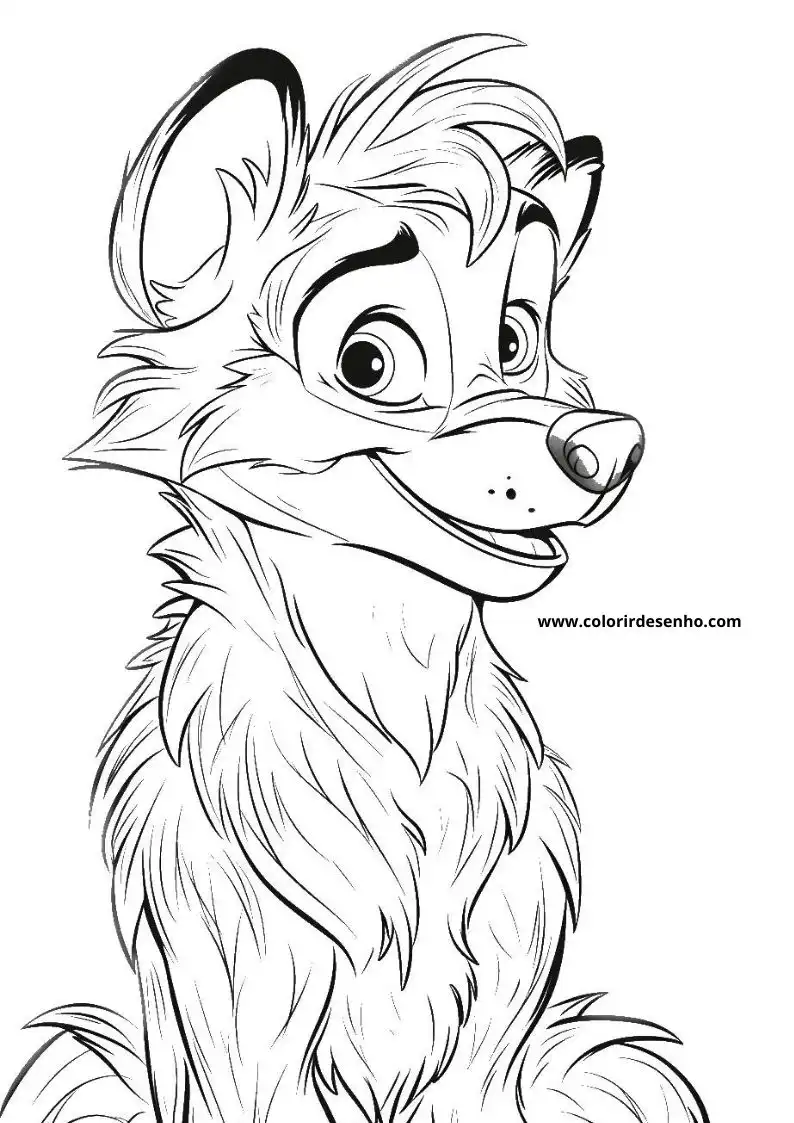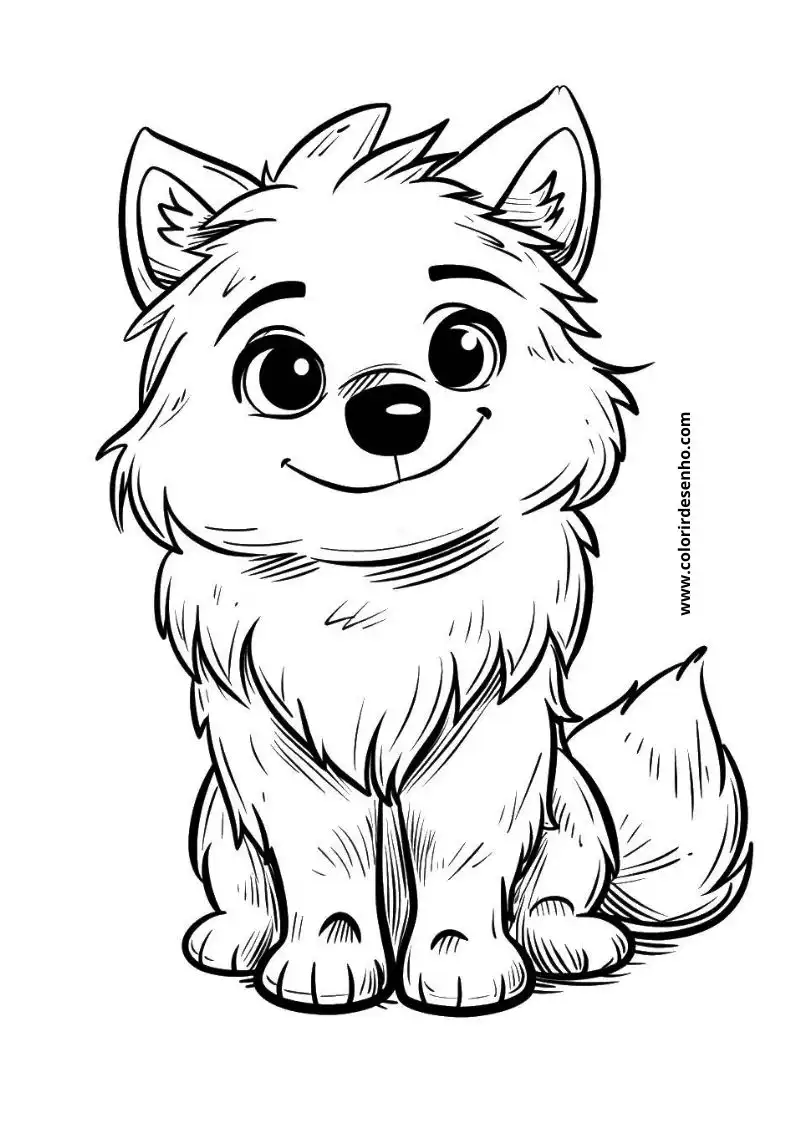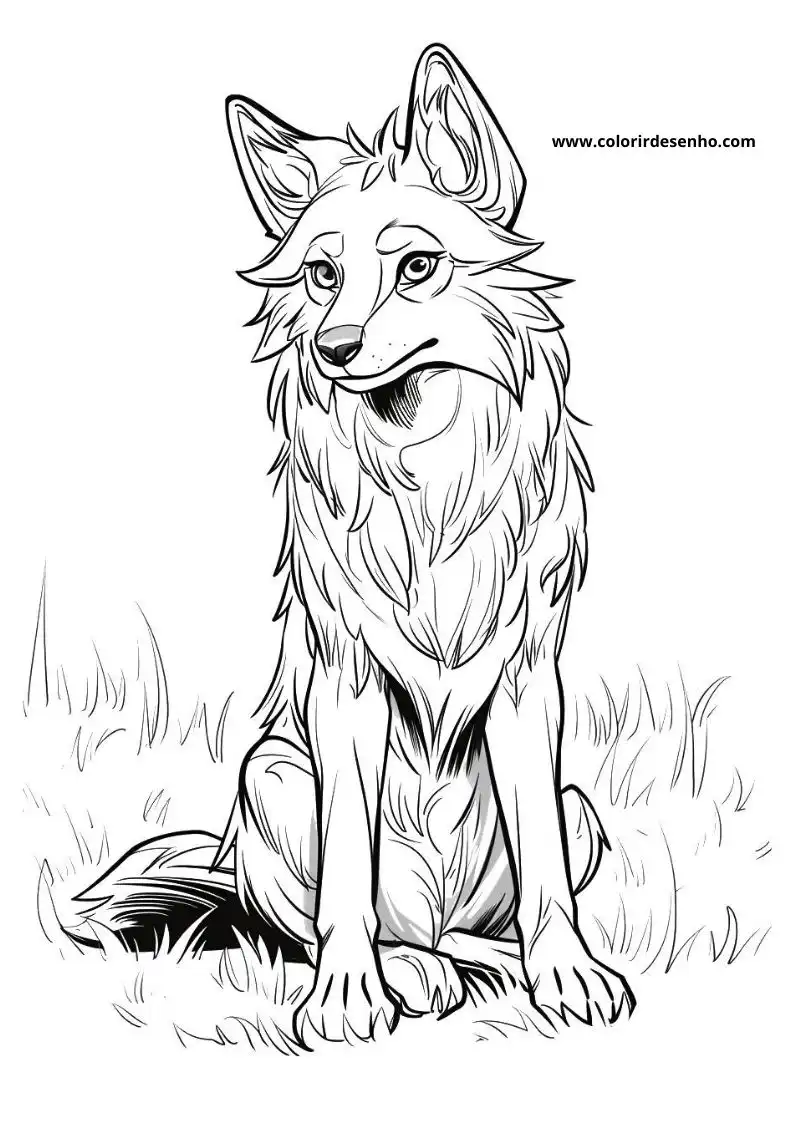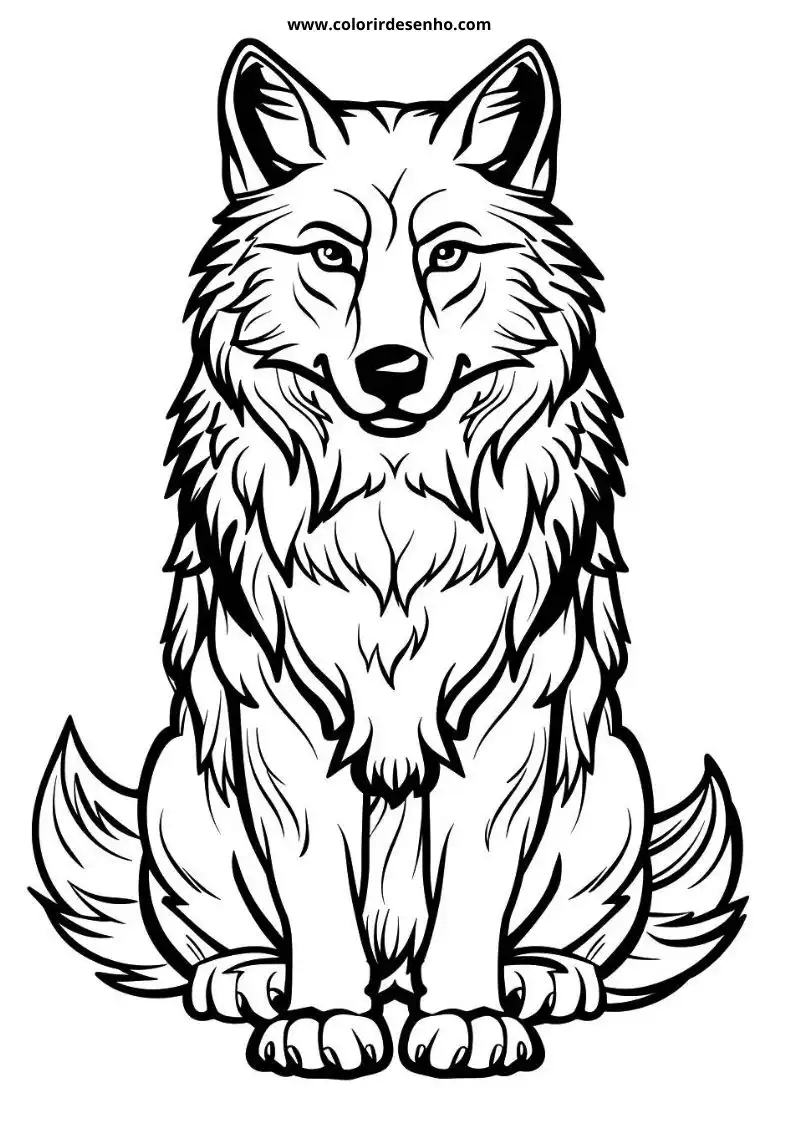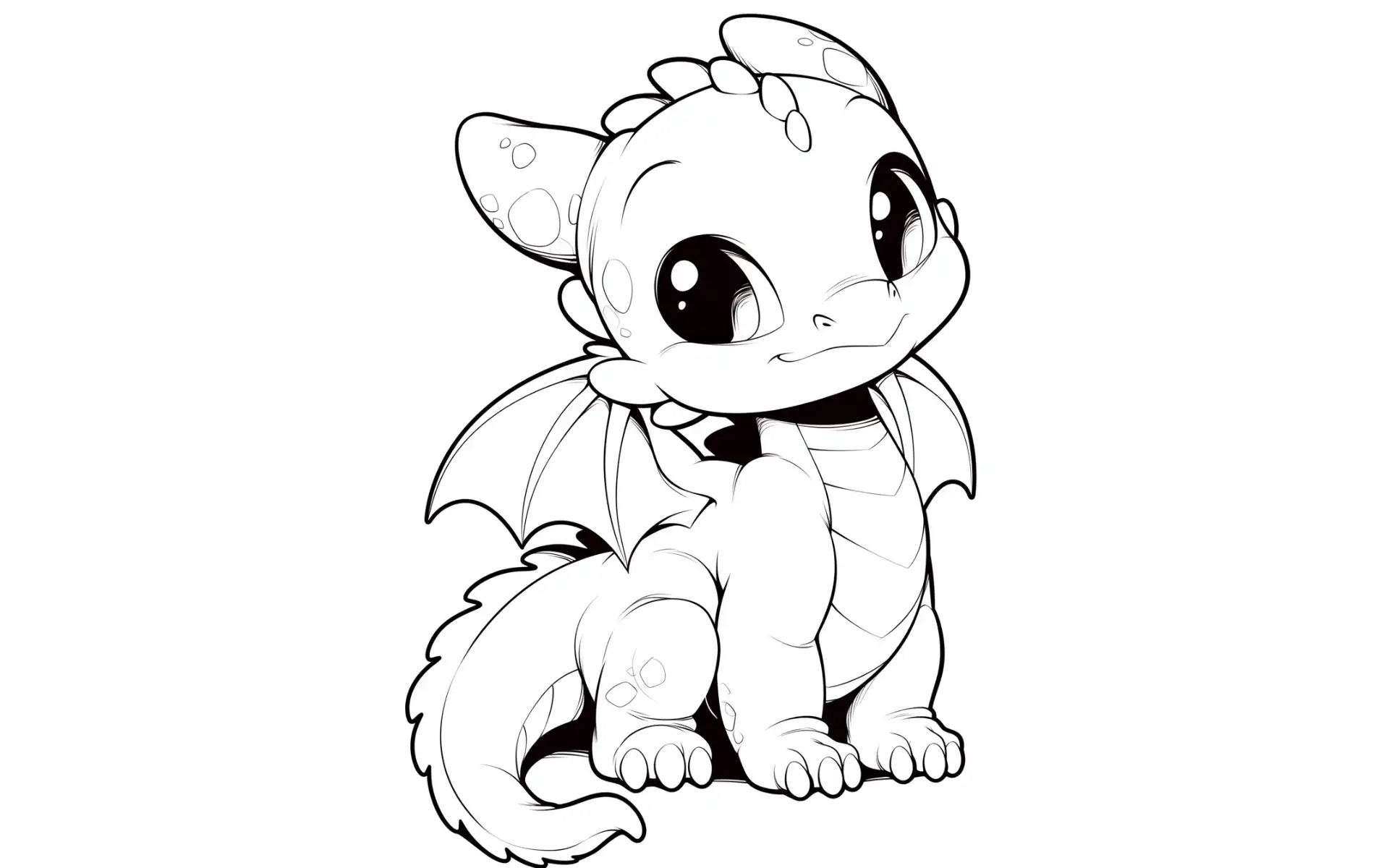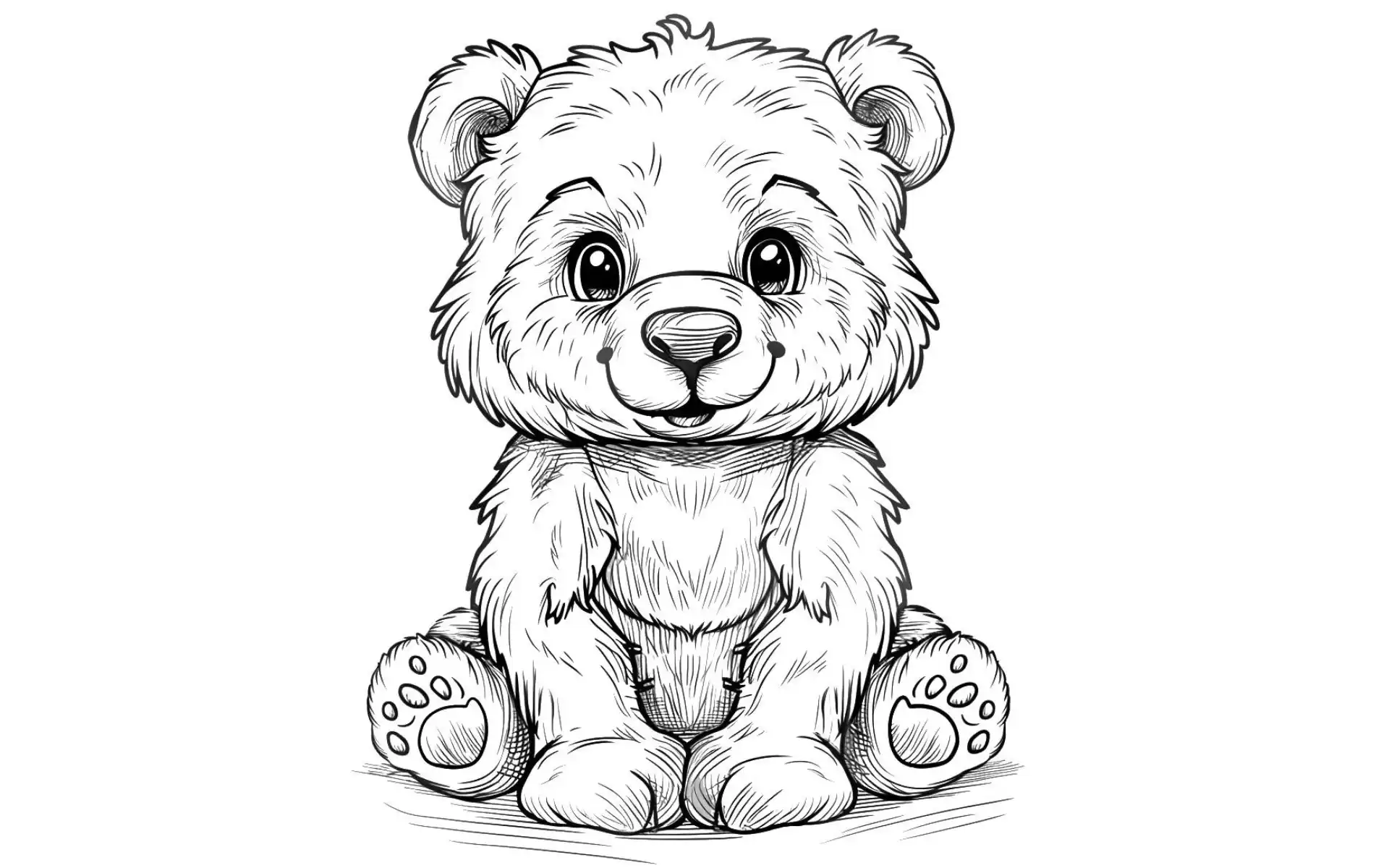Wolf Coloring Pages – 190 Wolf to Color and Print for Learning and Fun
If you’re looking for an engaging and educational activity to share with children, or even a creative way to unwind, Wolf Coloring Pages are a fantastic choice. Not only do these coloring sheets provide a fun, relaxing escape, but they also support the development of fine motor skills, focus, and creativity in a unique way. Here, you’ll find an incredible collection of 190 different wolf images to print and color, ranging from realistic wolves in their natural habitats to more playful, artistic interpretations. Grab your colored pencils, markers, or paints, and step into the wild and fascinating world of wolves!
Free Printable Wolf to Color for Creative Exploration
Coloring has been a beloved activity across generations, and the allure of wolves adds an extra layer of fascination. These powerful animals, known for their loyalty and strength, have long captured the imaginations of people worldwide. By bringing color to these wolves, you can add your own creative flair to the majesty of this creature. Our printable wolf images are great for all ages – they’re easy to download, print, and bring to life. Whether you’re coloring with young children or seeking a quiet escape for yourself, wolf coloring pages are the perfect choice.
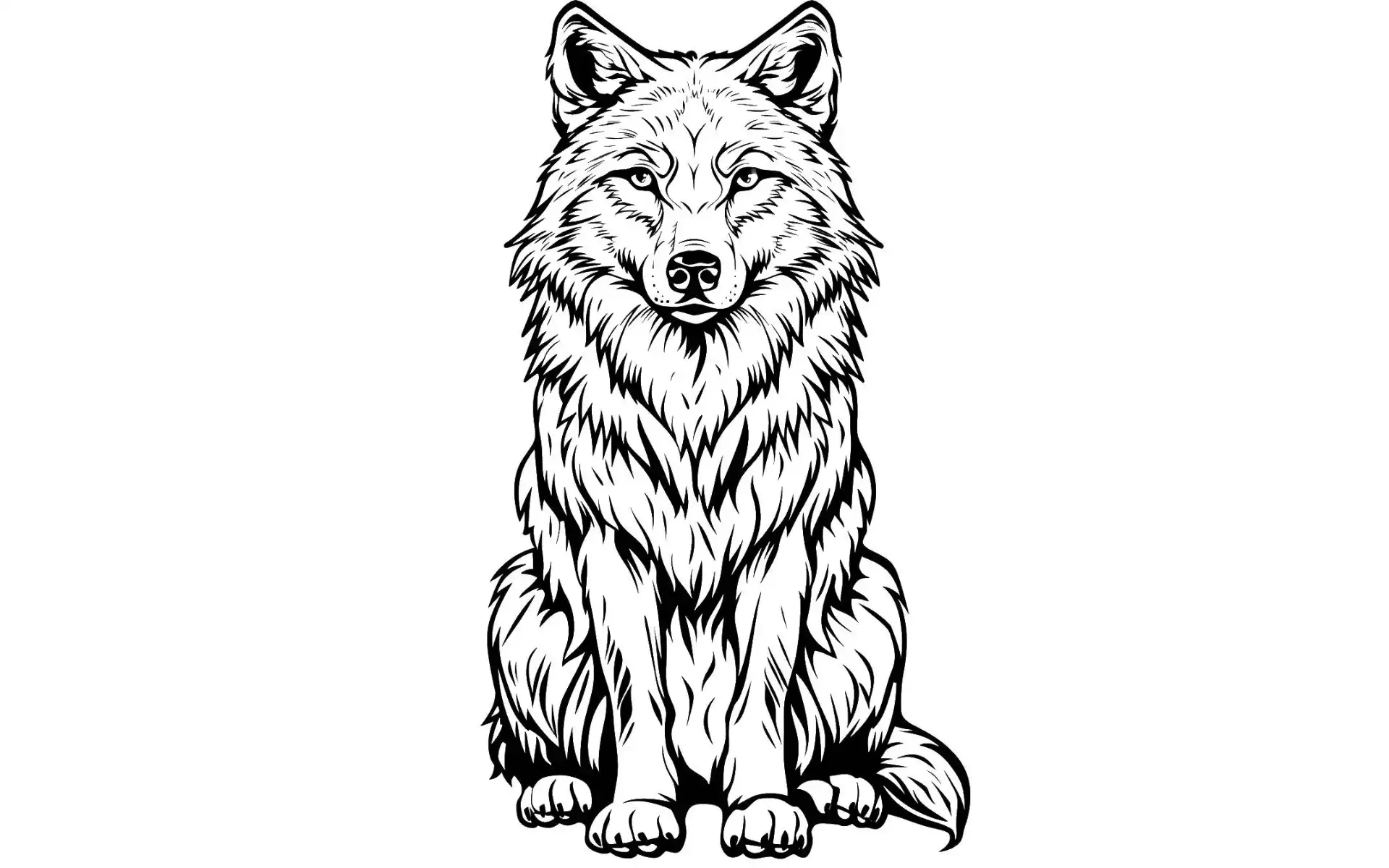
THE COLORING PICTURES ARE AT THE BOTTOM OF THE PAGE, WHEN YOU OPEN THE PICTURE, CLICK ON THE SAVE BUTTON ABOVE THE PICTURE.
The Gray Wolf – The Largest and Most Iconic Species
Did you know that the gray wolf, also known as Canis lupus, is the largest wolf species in the world? These animals are true giants in the wilderness, with some weighing up to 80 kilograms and reaching lengths of almost 2 meters from nose to tail. Known for their dense, multi-colored fur that ranges from light gray to almost black, gray wolves are perfectly adapted to survive the harsh winters in northern regions. Coloring gray wolves can be an exciting way to explore their beauty and resilience, especially when learning about their habitats and lifestyle.
Mysterious and Intricate Communication
Wolves are fascinating not only for their strength and pack dynamics but also for their communication skills. While their iconic howl can be heard over several miles, wolves use a range of sounds and visual cues to stay connected with their pack. Facial expressions, body language, and subtle vocalizations all play a role in how wolves maintain their social structure. By coloring images of wolves, you can begin to imagine their unique personalities and the way they communicate, bringing a new appreciation to these complex animals.
The Vital Role of Wolves in Ecosystems
Though often misunderstood, wolves play a critical role in keeping ecosystems balanced. As apex predators, they control herbivore populations, preventing overgrazing and protecting plant life. This creates a healthy cycle that supports other animals and the natural environment. By choosing wolf coloring pages, you’re not only embracing a fun pastime but also learning about the vital role these animals play in the wild.
Wolves’ Strong Social Bonds and Pack Structure
Wolves are social animals with deeply structured family lives. Packs are led by an alpha pair, who typically are the only wolves in the group to reproduce, ensuring that the pack remains strong and balanced. Other members, known as beta wolves, play supportive roles, while omega wolves, though low-ranking, are essential for maintaining harmony in the pack. Wolf packs work together to hunt, care for pups, and defend their territory. Coloring wolves in their family settings brings out the loyalty and cooperation that define their lives.
Wolves and Humans – A Relationship Through Time
The connection between wolves and humans dates back thousands of years, with wolves representing both companionship and fear. Wolves are ancestors of domestic dogs, symbolizing the bond that has grown over centuries between our species. Although wolves were often feared and even hunted in the past, modern conservation efforts now strive to protect them, ensuring that future generations will appreciate these amazing animals. Wolf coloring pages can be a wonderful way to explore the importance of these animals in our shared history.
The Arctic Wolf – A Master of Survival in the Frozen Tundra
Arctic wolves, a subspecies of gray wolves, are uniquely adapted to endure the harsh, frozen environments of the Arctic. These wolves have a stunning white coat that blends into the snowy landscape, helping them hunt and avoid danger. Smaller and stockier than gray wolves, they are built to conserve energy and stay warm in subzero temperatures. Living far from human civilization, Arctic wolves are among the most elusive of their kind, making them a fascinating subject to color and learn about.
Arctic Wolves’ Hunting Techniques and Survival Skills
In the vast, icy wilderness, Arctic wolves rely on their wits and teamwork to hunt scarce prey, such as musk oxen and Arctic hares. They often cover long distances in search of food, showcasing their strength and endurance. For those who enjoy nature and wildlife, coloring Arctic wolves can be a relaxing way to explore the strategies and skills these animals use to survive one of the world’s most challenging climates.
The Power of Camouflage and Adaptation
The fur color of wolves is essential for their survival. Arctic wolves use their white coats to blend seamlessly into the snowy landscape, while gray wolves rely on their mix of colors to camouflage in forested environments. Camouflage not only helps wolves hunt but also protects them from potential threats. Coloring pages that feature wolves in their natural surroundings can help illustrate this remarkable adaptation.
Wolves in Legends and Popular Culture
Wolves have always held a special place in folklore, mythology, and literature. Often associated with mystery and the wild, wolves appear as both protectors and villains in stories worldwide. For example, wolves are often seen as symbols of loyalty, while in other tales, they represent cunning and strength. By coloring wolves, you can experience the duality of these creatures, who embody both the beauty and ferocity of nature.
Wolves in Ancient Mythology
In various mythologies, wolves are depicted as powerful beings. In Norse mythology, the giant wolf Fenrir was said to bring about Ragnarok, the end of the world. Meanwhile, in Roman mythology, a she-wolf raised Romulus and Remus, the founders of Rome. Coloring wolves with these mythological associations can add depth to your appreciation of their cultural significance.
Wolves in Modern Media
Wolves continue to captivate audiences in books, movies, and TV shows. From the noble direwolves of Game of Thrones to the Big Bad Wolf in classic fairy tales, wolves are portrayed with a blend of nobility, mystery, and danger. By coloring wolves, you can reimagine these legendary characters and create your own version of their wild personas.
Fascinating Facts about the Red Wolf
The red wolf is a rare and endangered species native to the southeastern United States. Red wolves are distinguished by their smaller size, reddish-brown coats, and slender builds, making them unique among wolf species. Once nearly driven to extinction, these wolves are now the focus of conservation efforts to restore their population. Learning about red wolves through coloring can deepen your understanding of their distinct characteristics and the challenges they face.
Conservation Efforts for Red Wolves
After reaching the brink of extinction, red wolves were brought back from the edge through breeding and reintroduction programs. Today, roughly 200 red wolves live in the wild, but their survival remains uncertain due to habitat loss and hunting. By coloring these wolves, you can celebrate their resilience and learn about the importance of conservation.
The Red Wolf’s Role in the Ecosystem
As with gray wolves, red wolves help balance their ecosystems. By controlling prey populations, they prevent overgrazing and support other wildlife. Coloring red wolves highlights not only their beauty but also their essential role in maintaining ecological balance.
The Lasting Appeal of Wolves in Human Culture
Wolves continue to hold a timeless fascination for people everywhere. Their intelligence, resilience, and strong social bonds inspire admiration and respect. Whether you view wolves as symbols of independence or as creatures of mystery, they remain iconic animals that captivate the imagination. Our wolf coloring pages offer a way to connect with this fascination, allowing you to color your way into the world of these remarkable animals.
The Strategic Brilliance of Wolves
Wolves are known for their problem-solving abilities, especially in hunting. They use the landscape to their advantage and adapt to their prey’s behavior, showcasing their intelligence and teamwork. Coloring wolves can provide a window into this brilliant side of their nature.
Life as a “Lone Wolf”
Not all wolves live in packs. Some strike out alone, becoming “lone wolves” in search of new territories or partners. Although solitary life is challenging, these wolves showcase incredible resilience and adaptability. Coloring lone wolves captures the spirit of independence that defines these remarkable animals.
Whether you are drawn to wolves’ fierce loyalty, intelligence, or adaptability, our Wolf Coloring Pages provide a creative and educational way to explore these qualities.
Lone Wolves
Although wolves are social animals by nature, not all of them live in packs. The term “lone wolf” is used to describe wolves that, for one reason or another, become separated from their pack. These wolves are often youngsters who have left their family in search of their own territory or a partner to form a new pack. Although they may seem isolated, lone wolves are extremely resilient and in many cases end up finding a new group or establishing themselves as leaders of a new pack.
Lone Wolf Survival
The life of a lone wolf can be dangerous, as they don’t have the support of a pack to hunt or protect themselves. However, these wolves also have the advantage of not having to share resources with others, which can be beneficial in areas where food is scarce. The lone wolf’s survival depends on its ability to adapt quickly to new situations and its ability to hunt alone. Although this phase of the wolf’s life is risky, it is also an opportunity for growth and self-reliance.
Reuniting with the Pack
For many lone wolves, the journey eventually leads to a reunion with a pack, either the original one or a new one. This reunion can be a tense moment, as the lone wolf needs to integrate back into the pack hierarchy. If successful, the wolf can find its place in the pack and even take on an important role. The ability of a lone wolf to reintegrate into the group is further proof of the social complexity of these animals.


